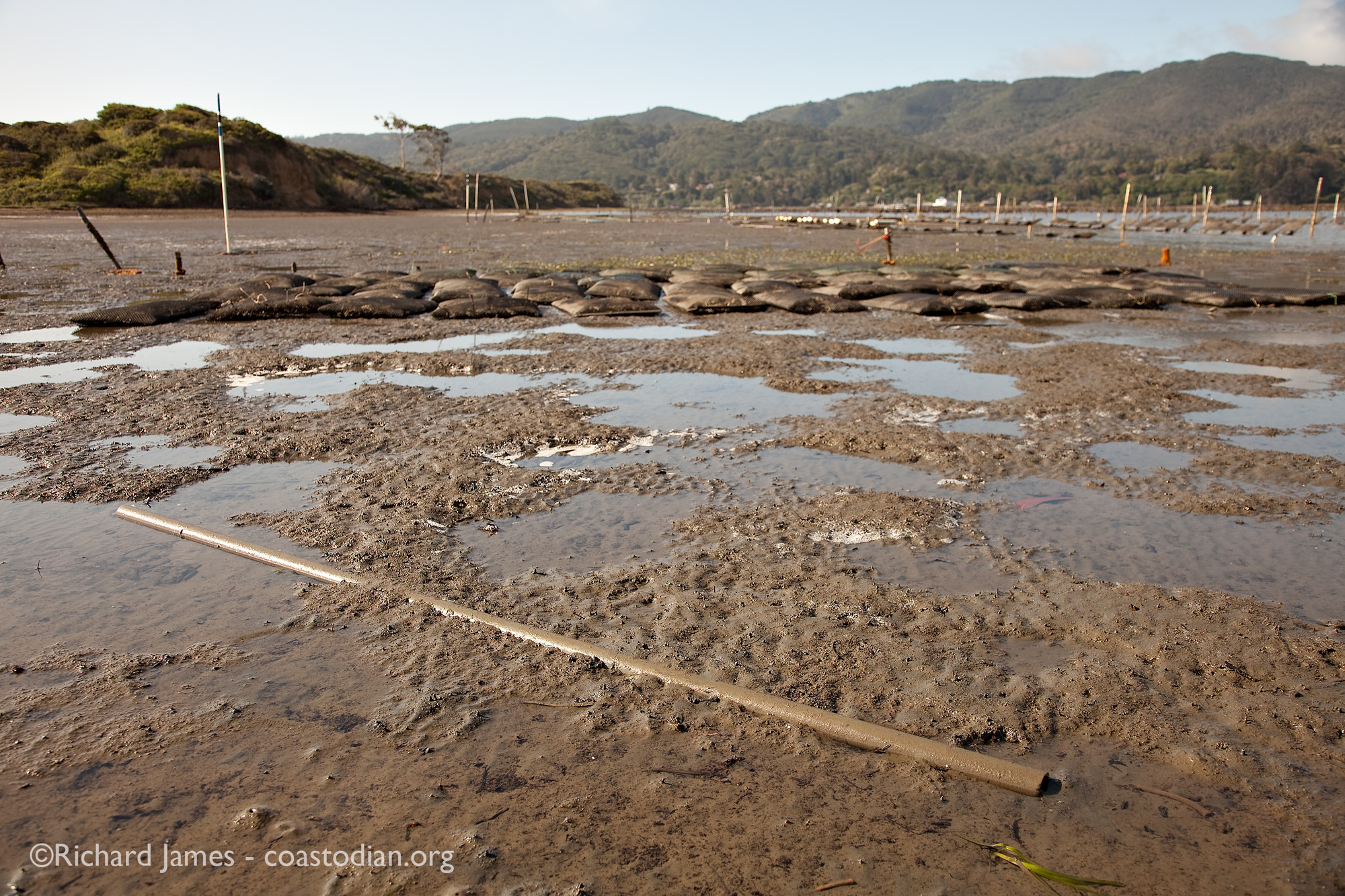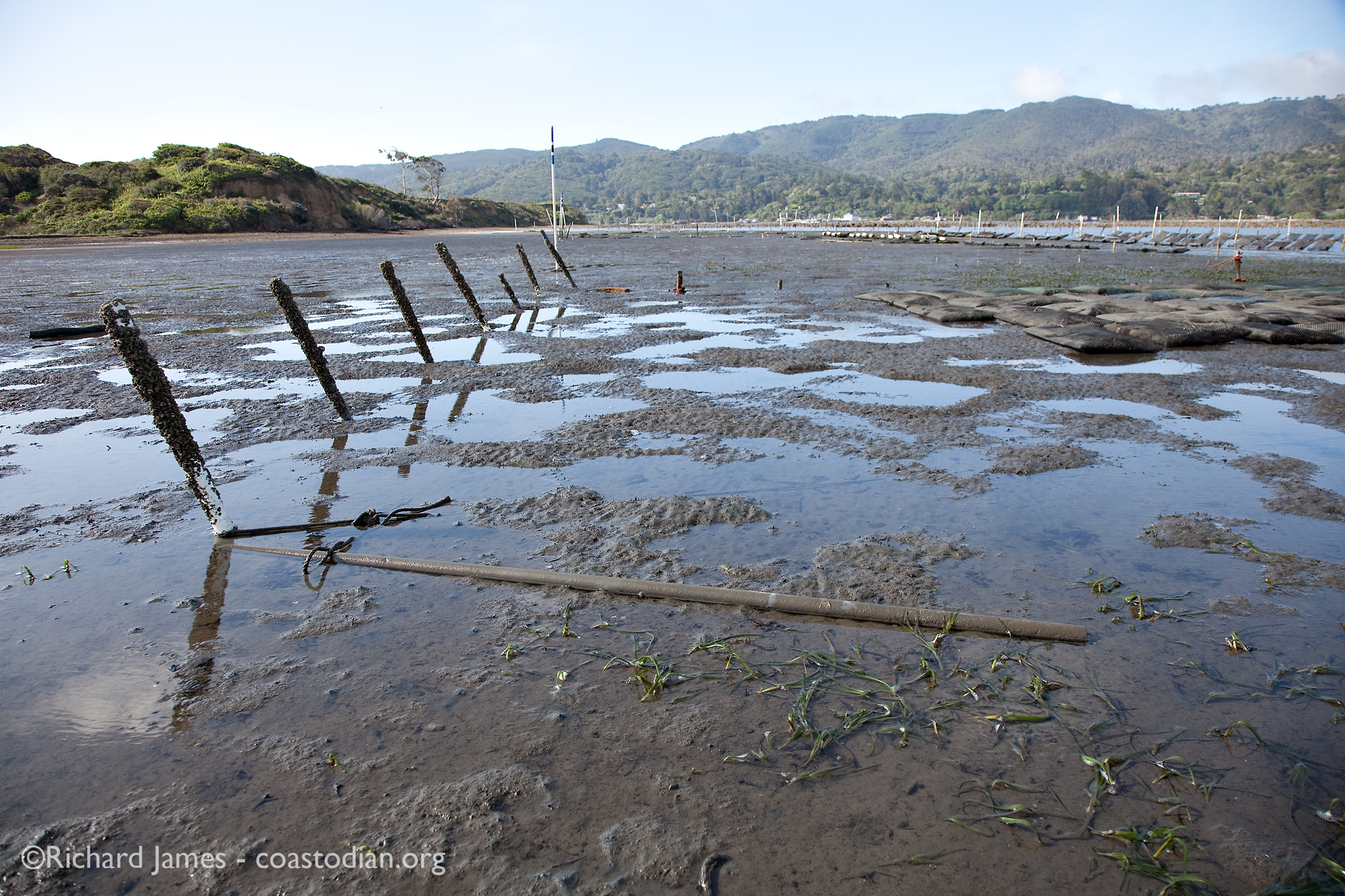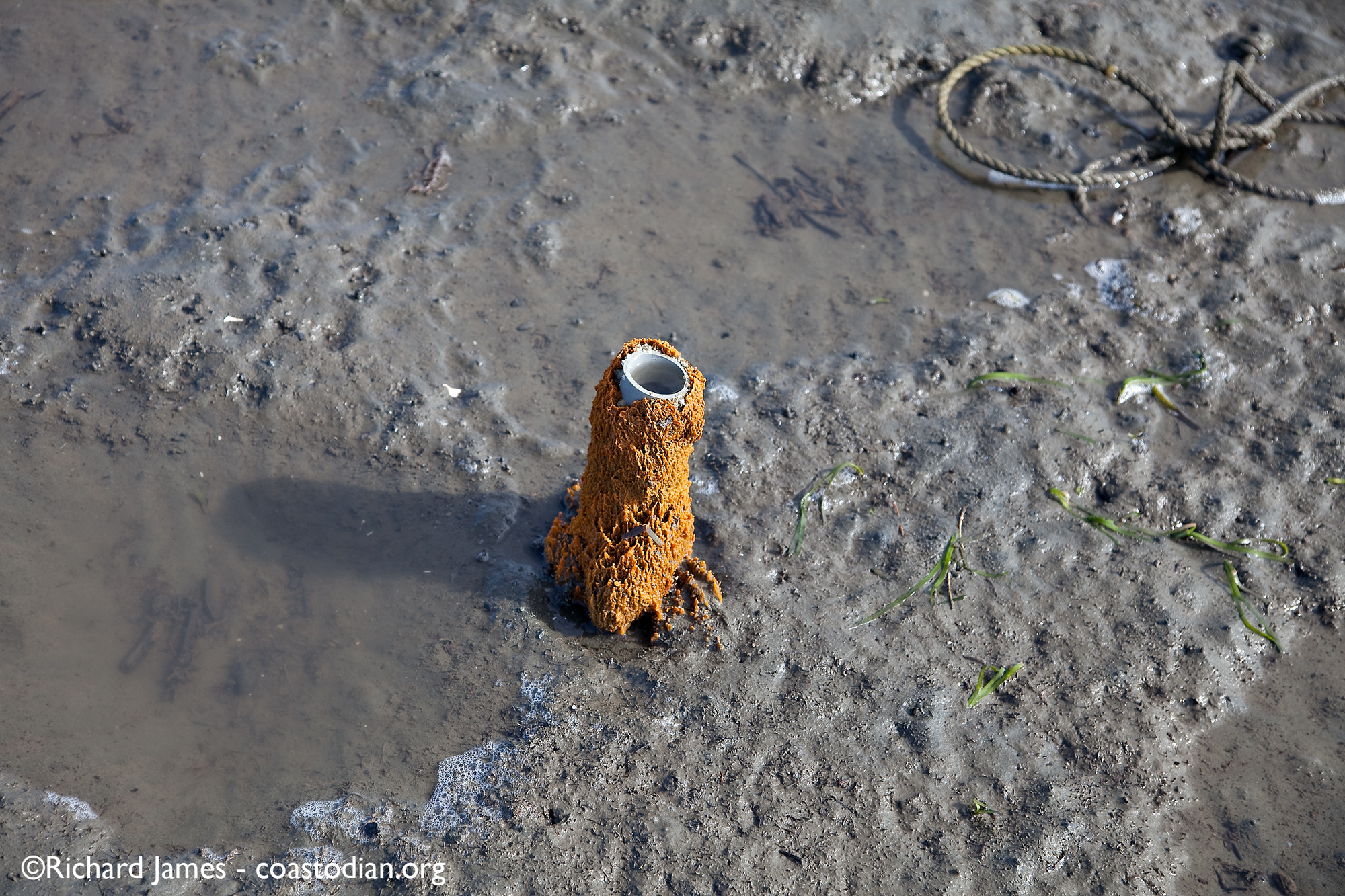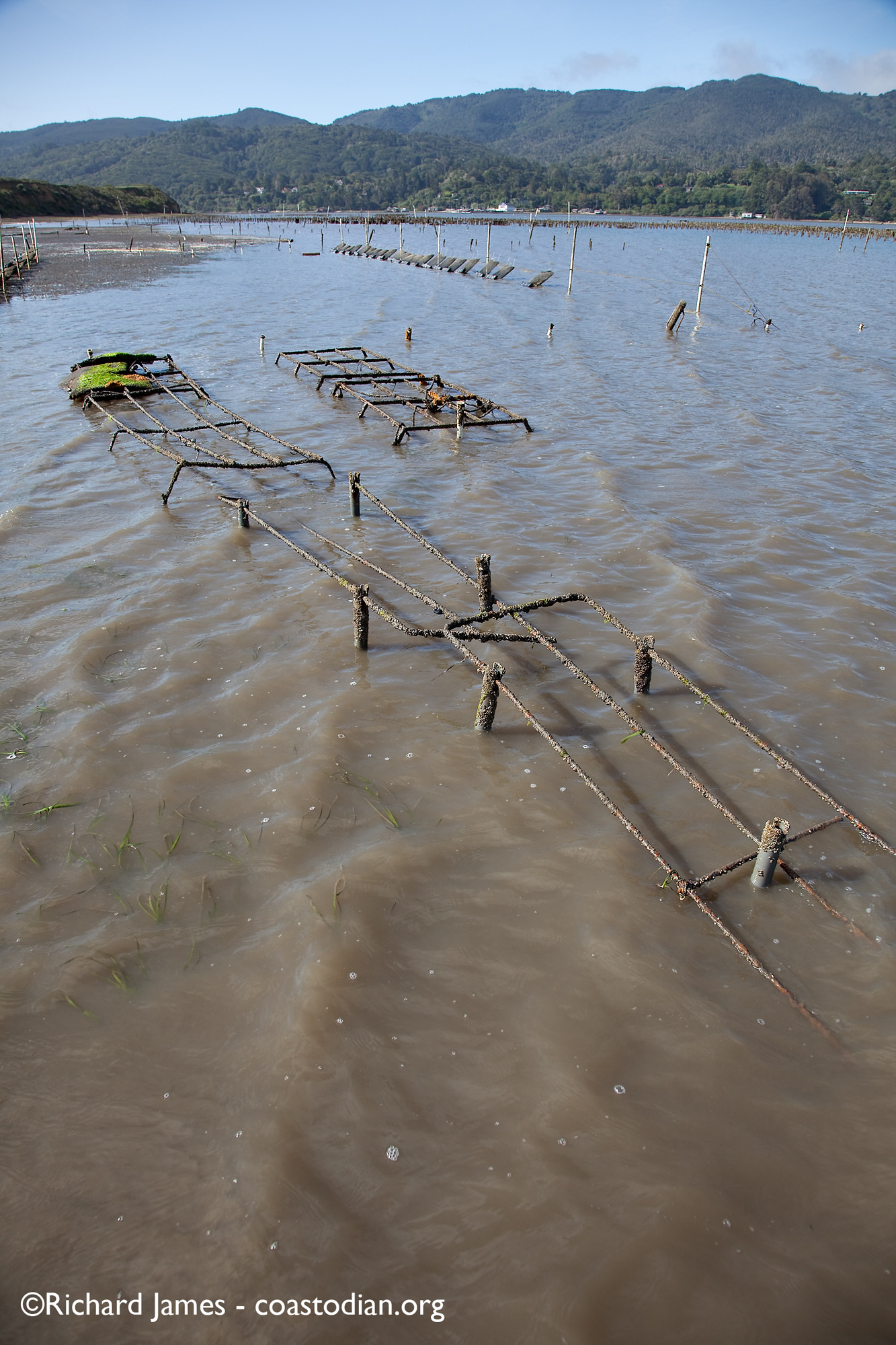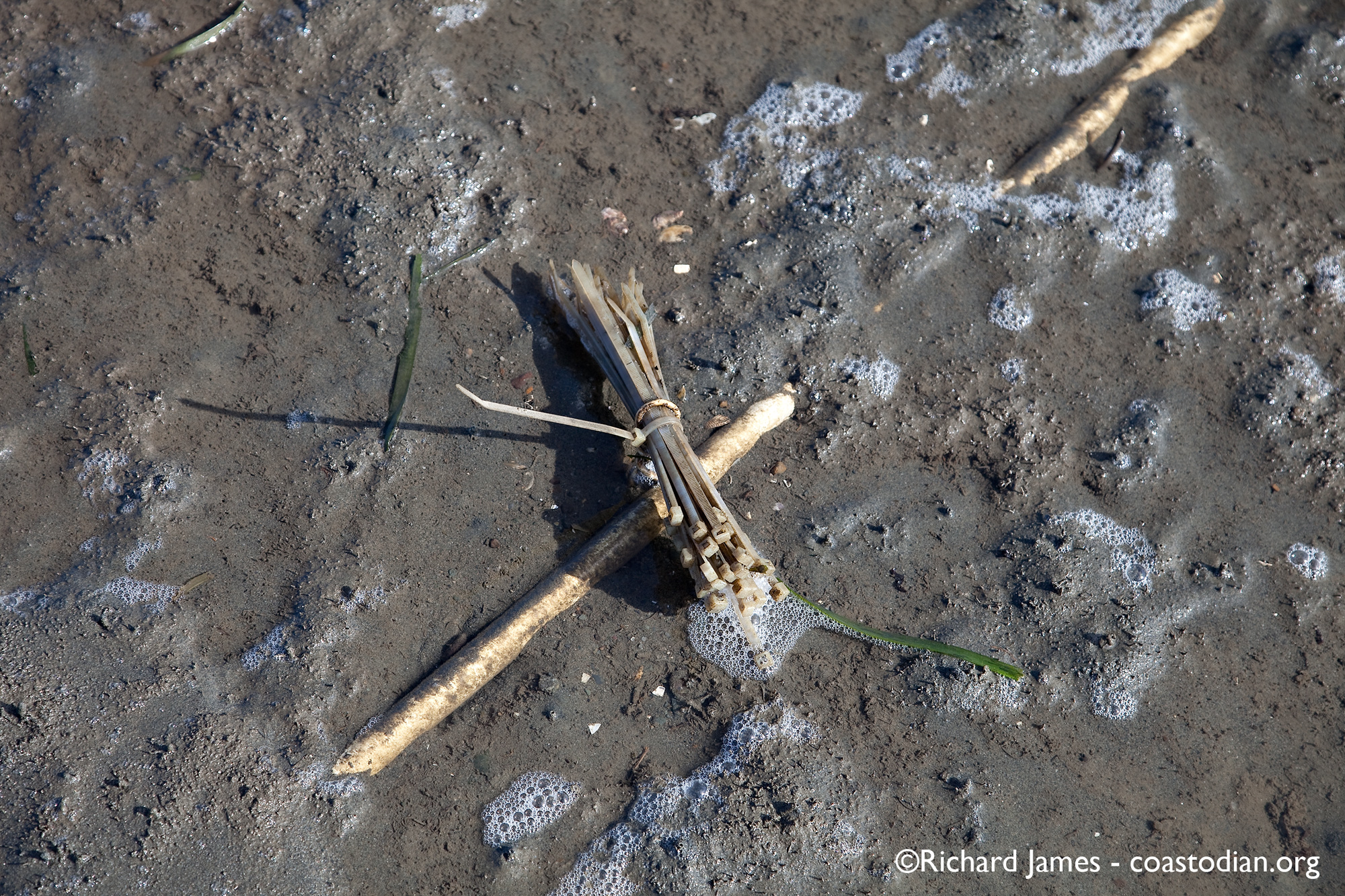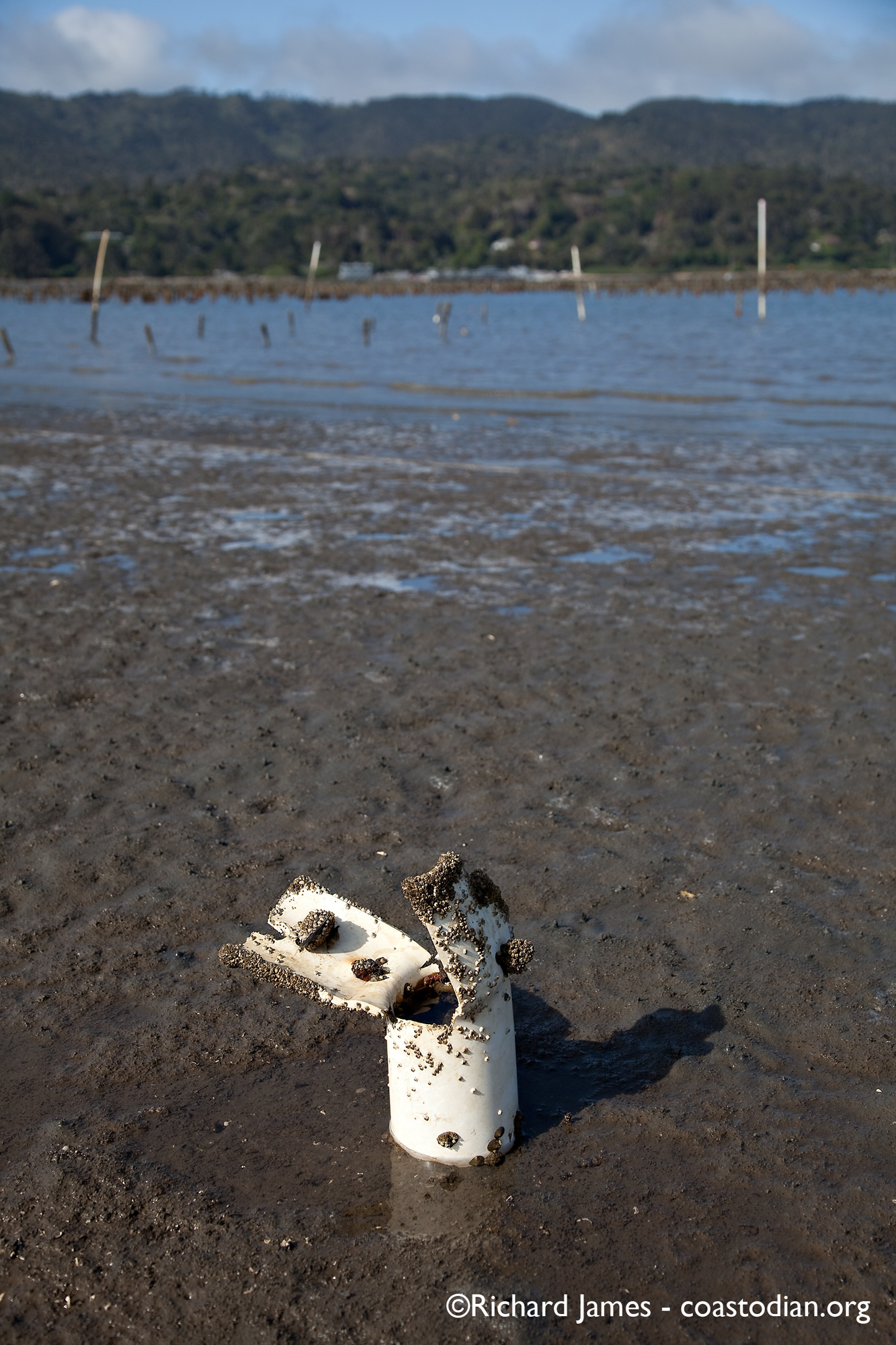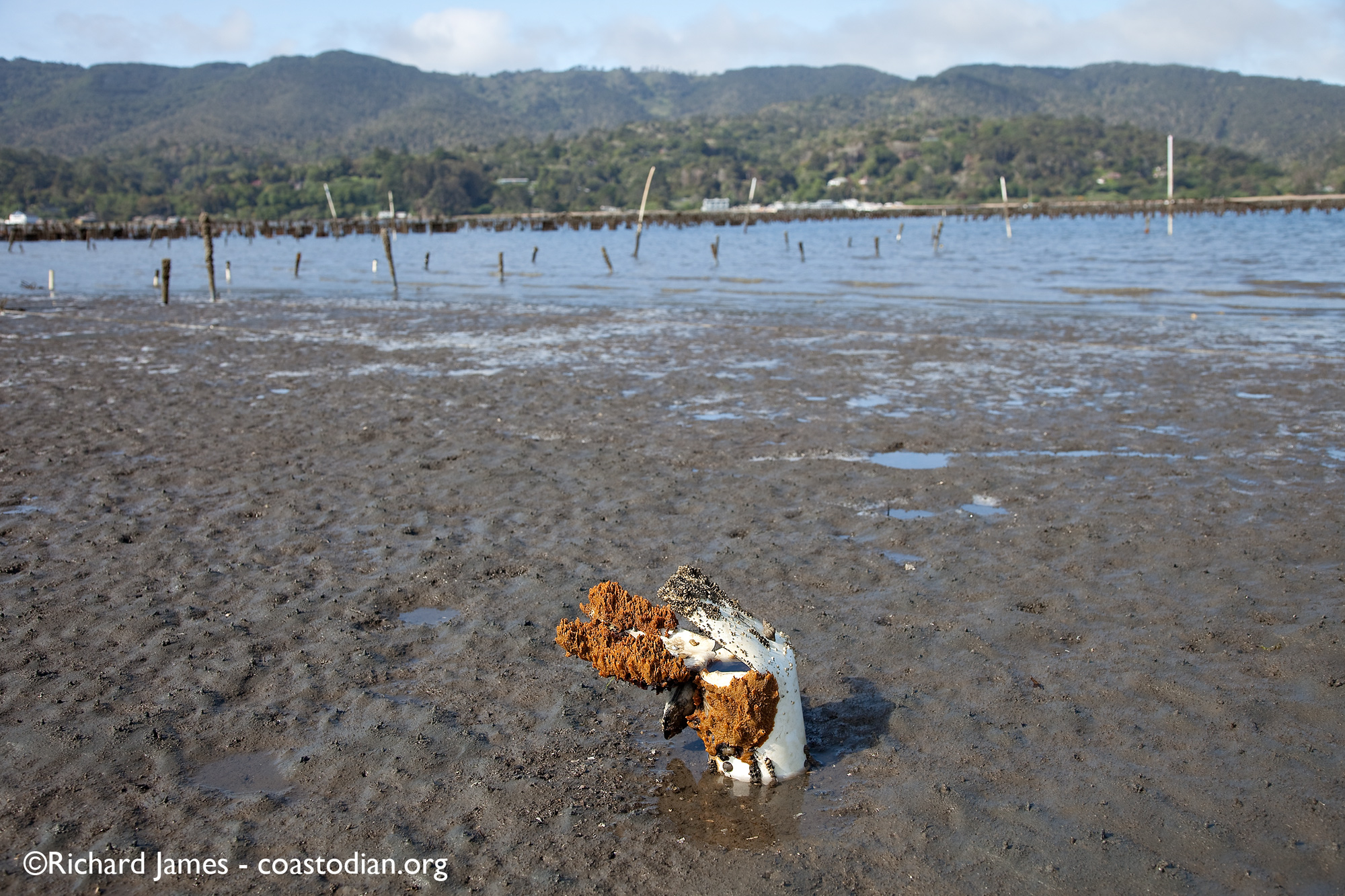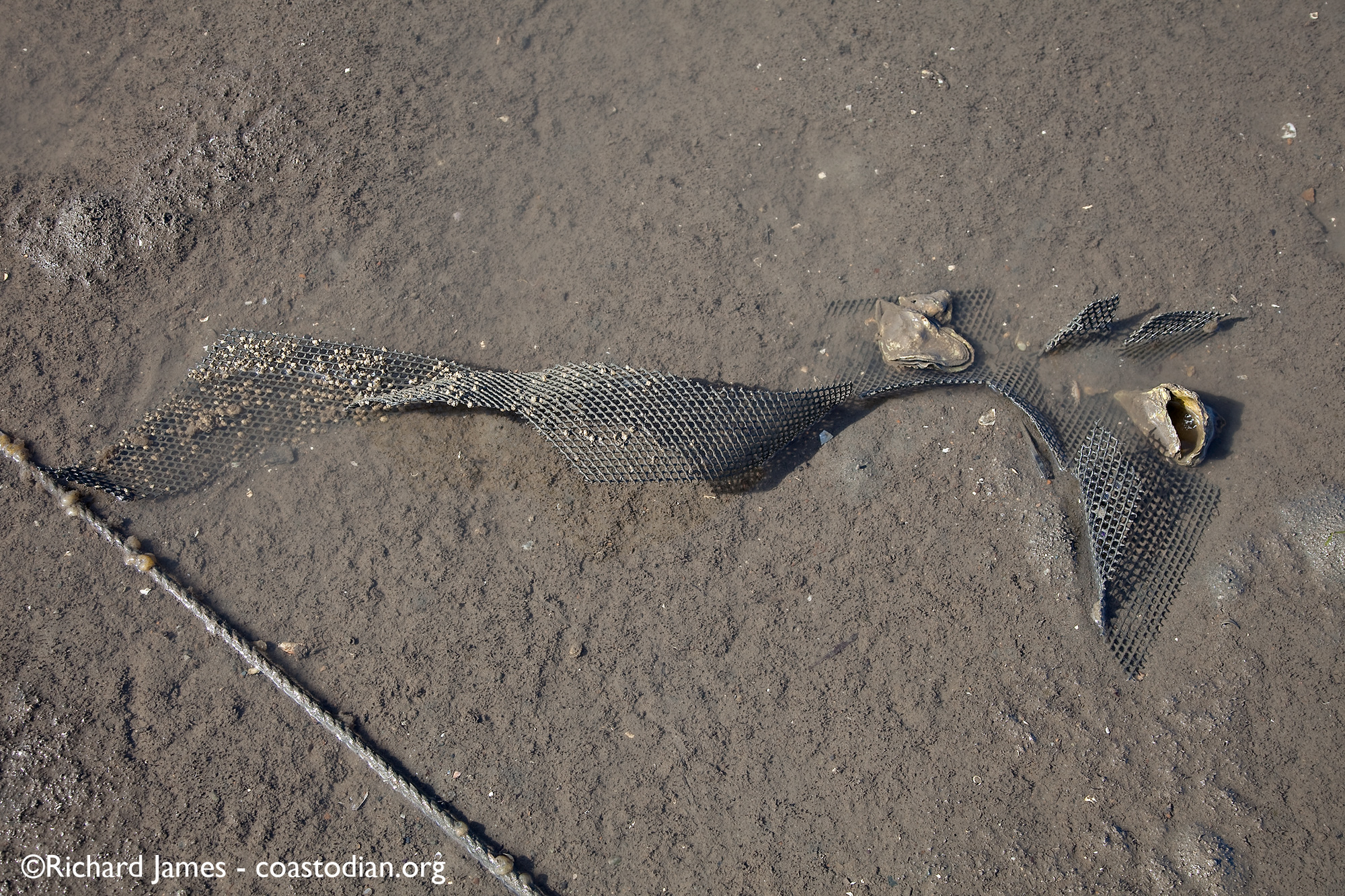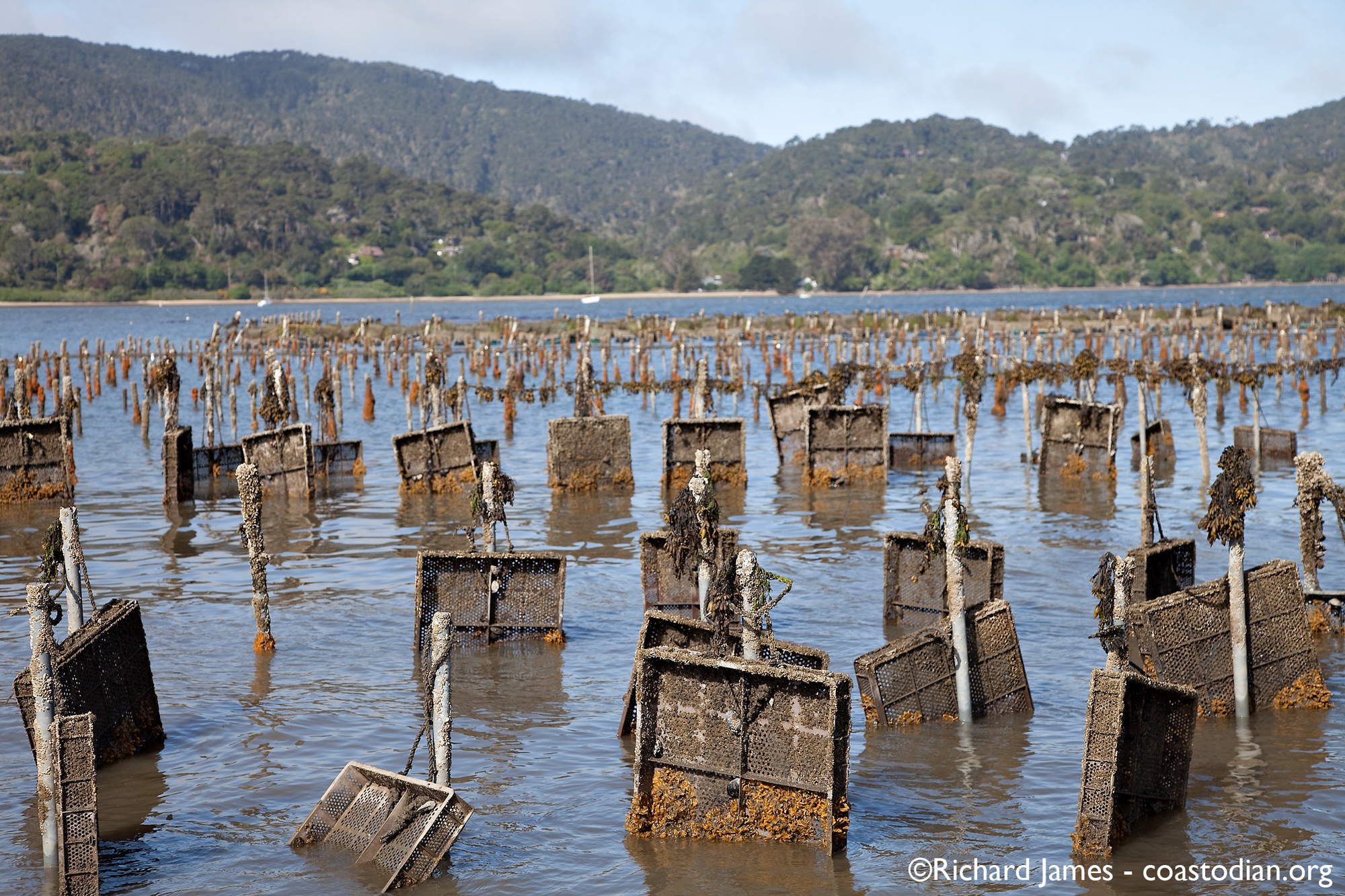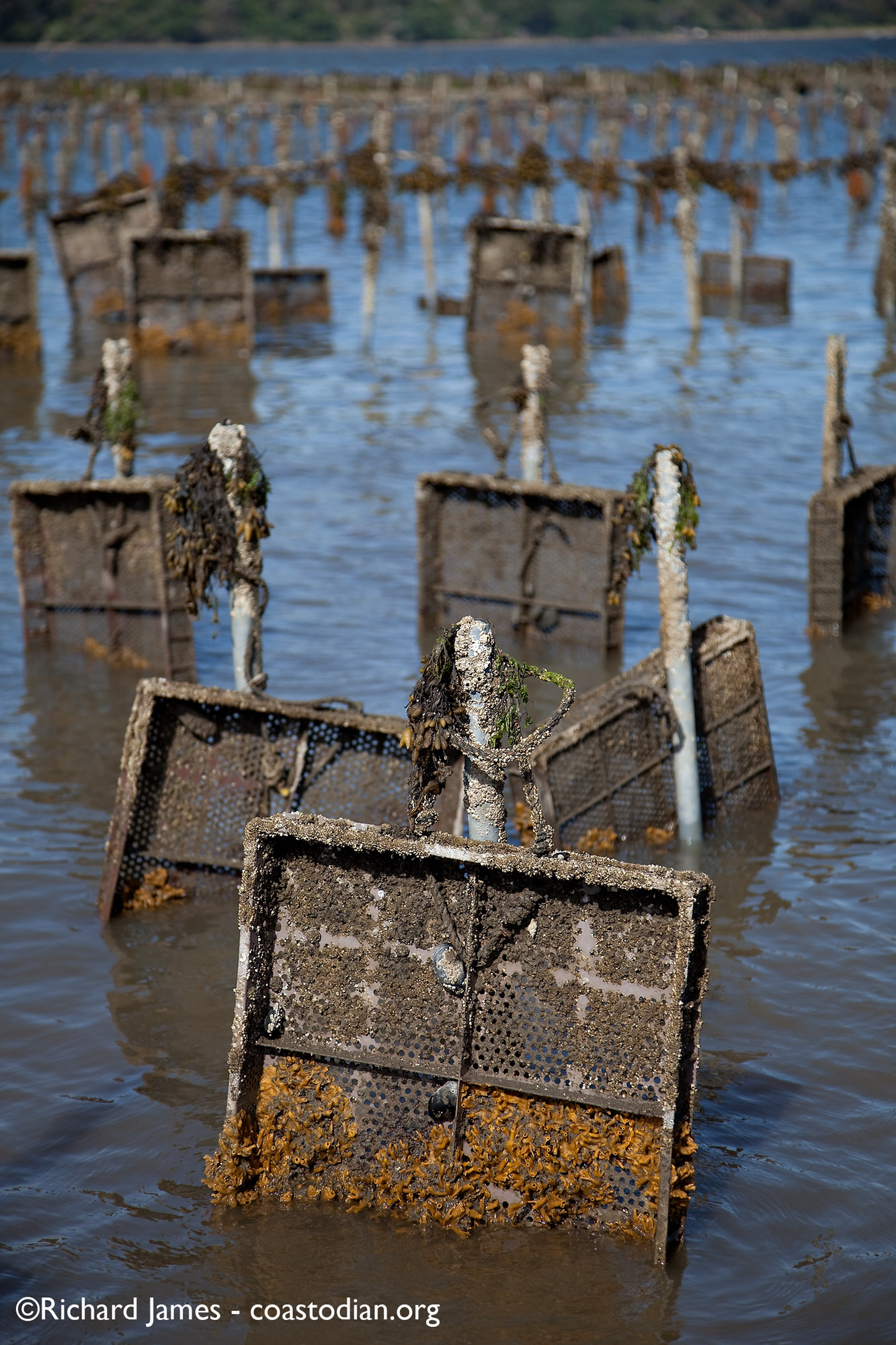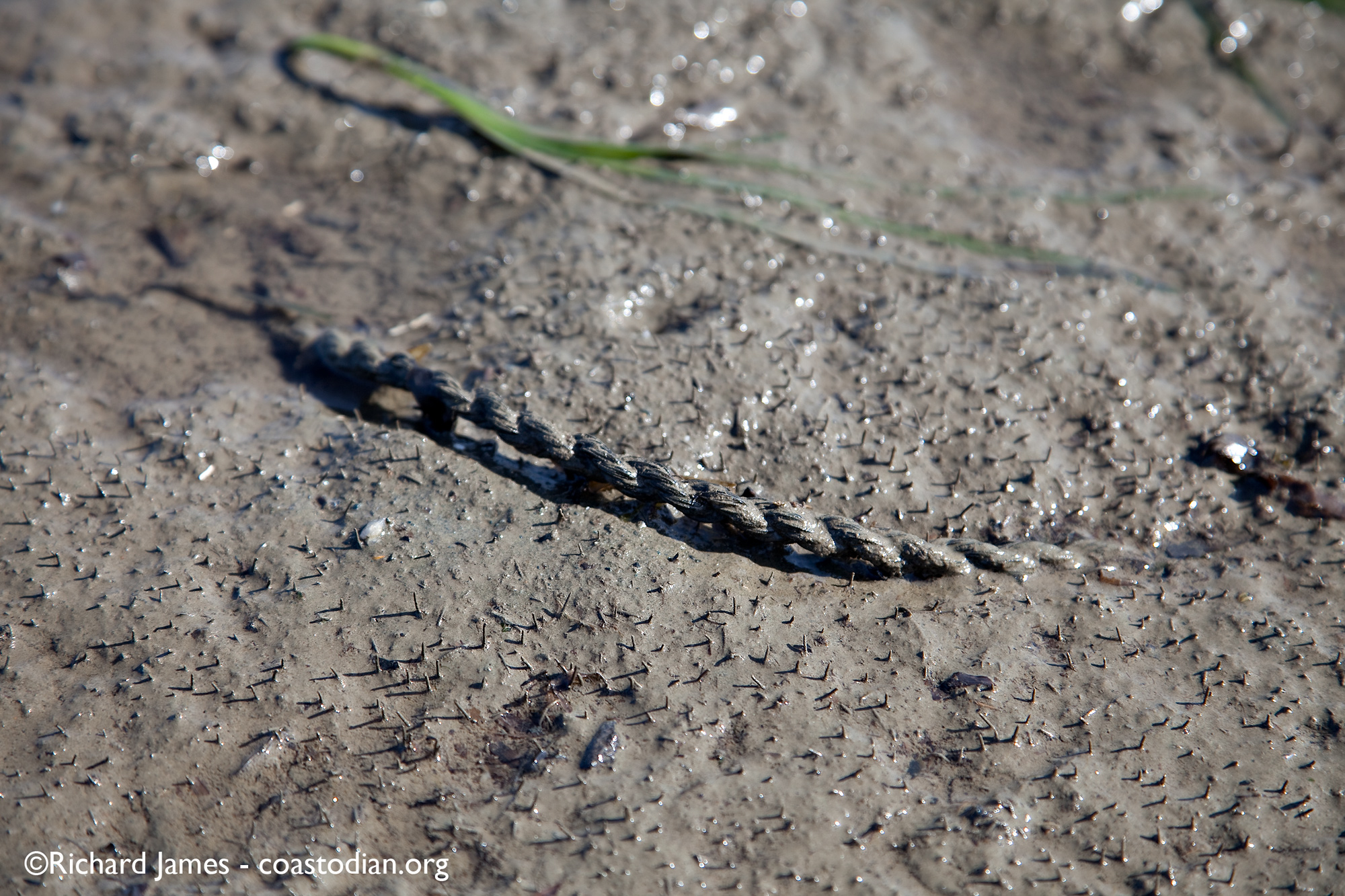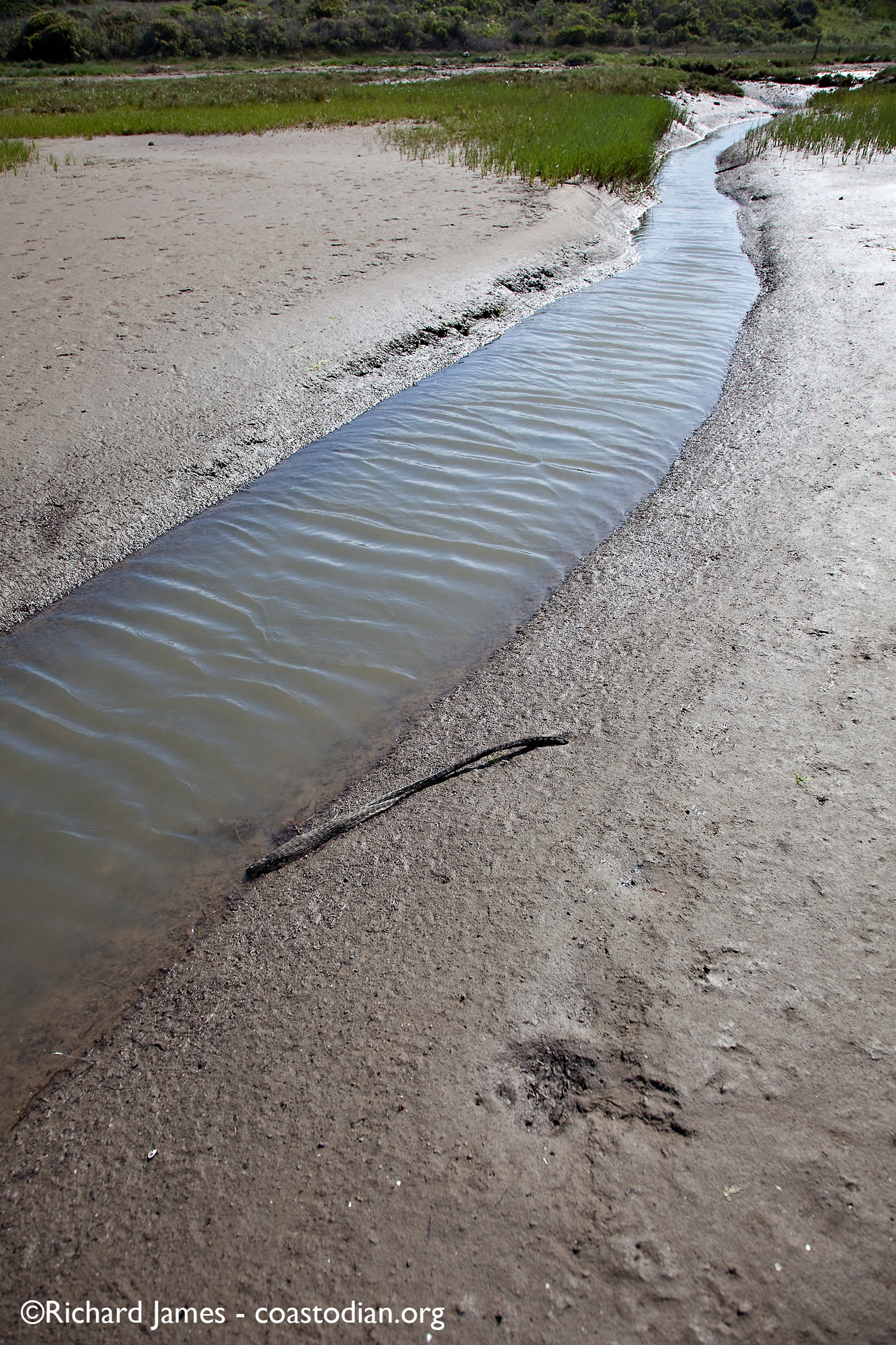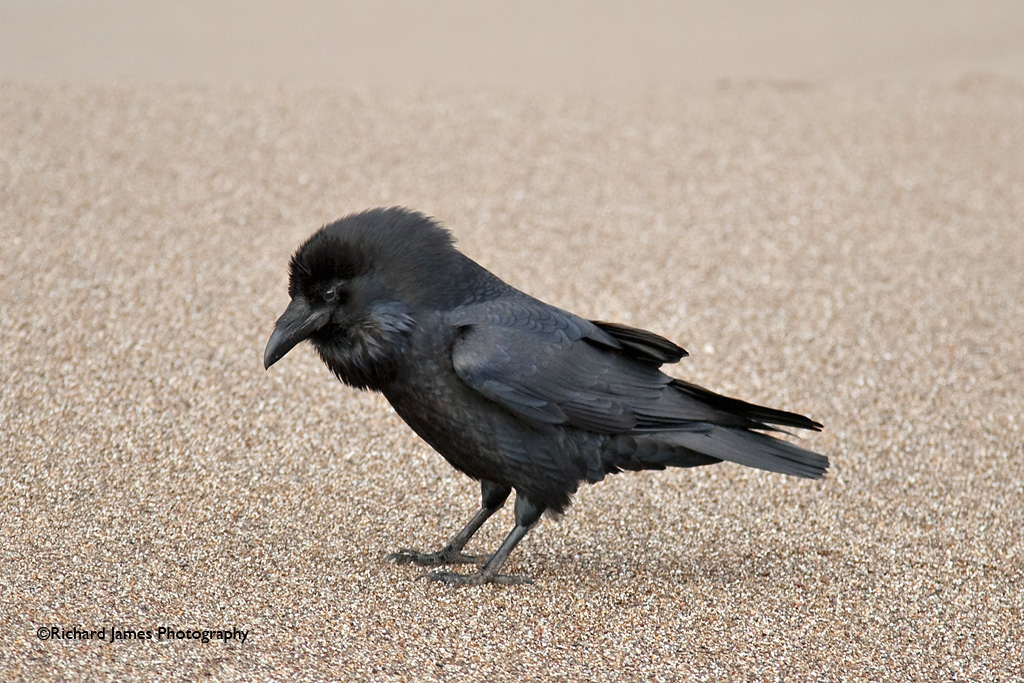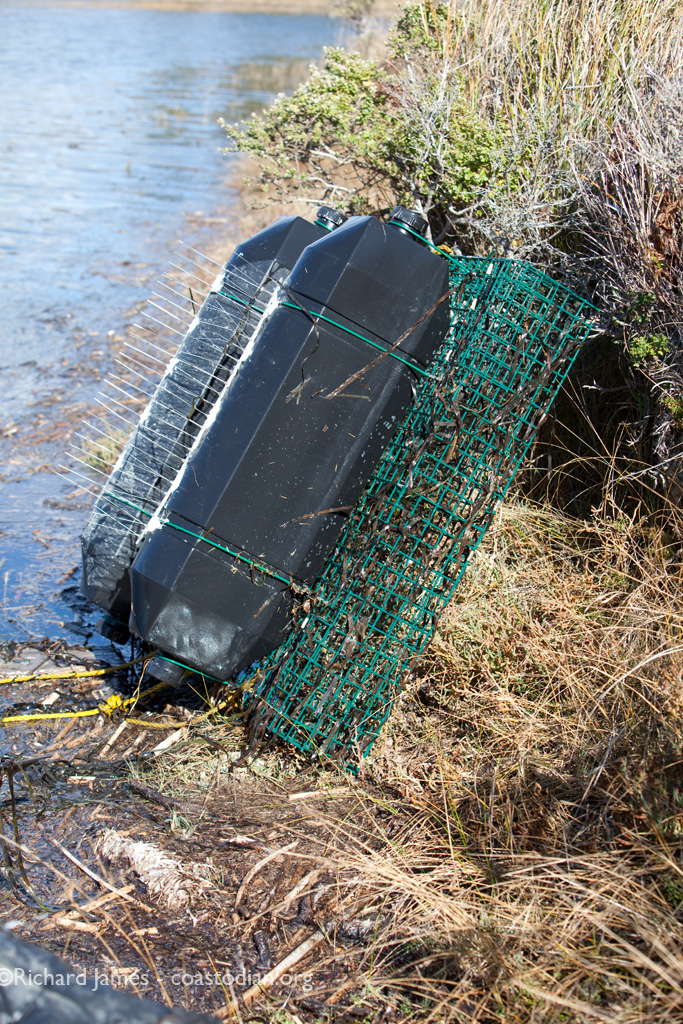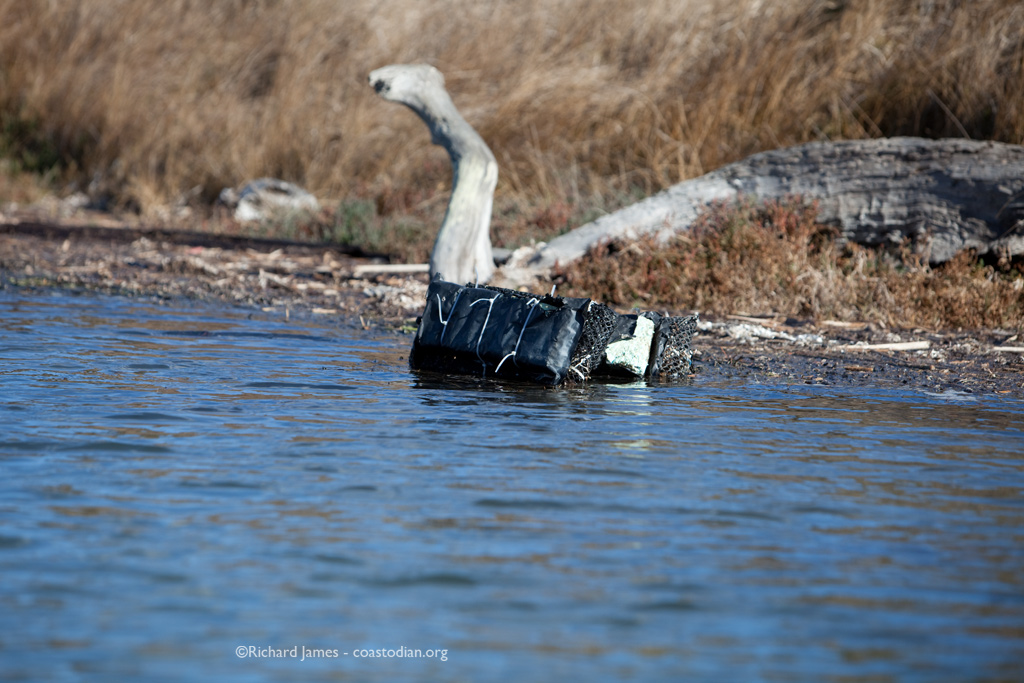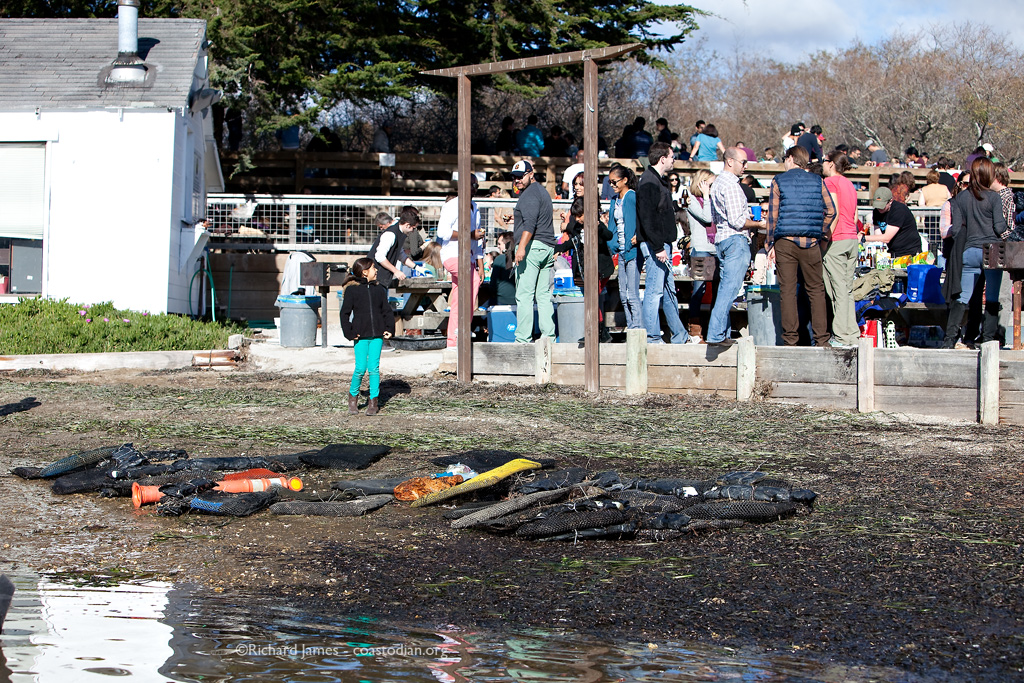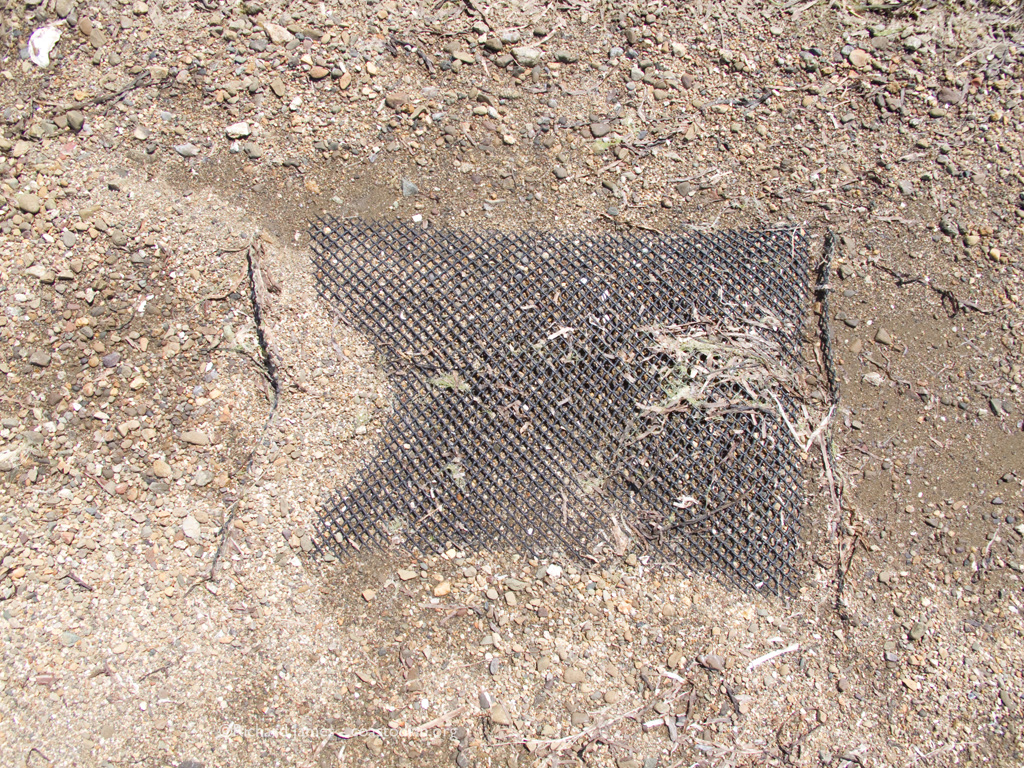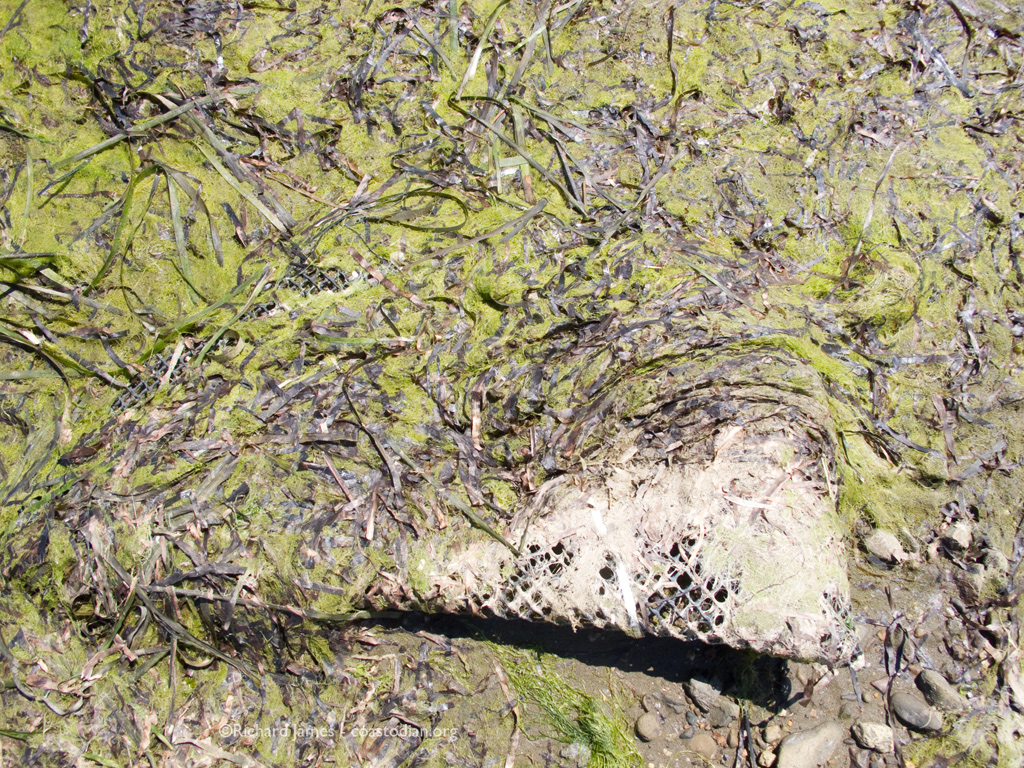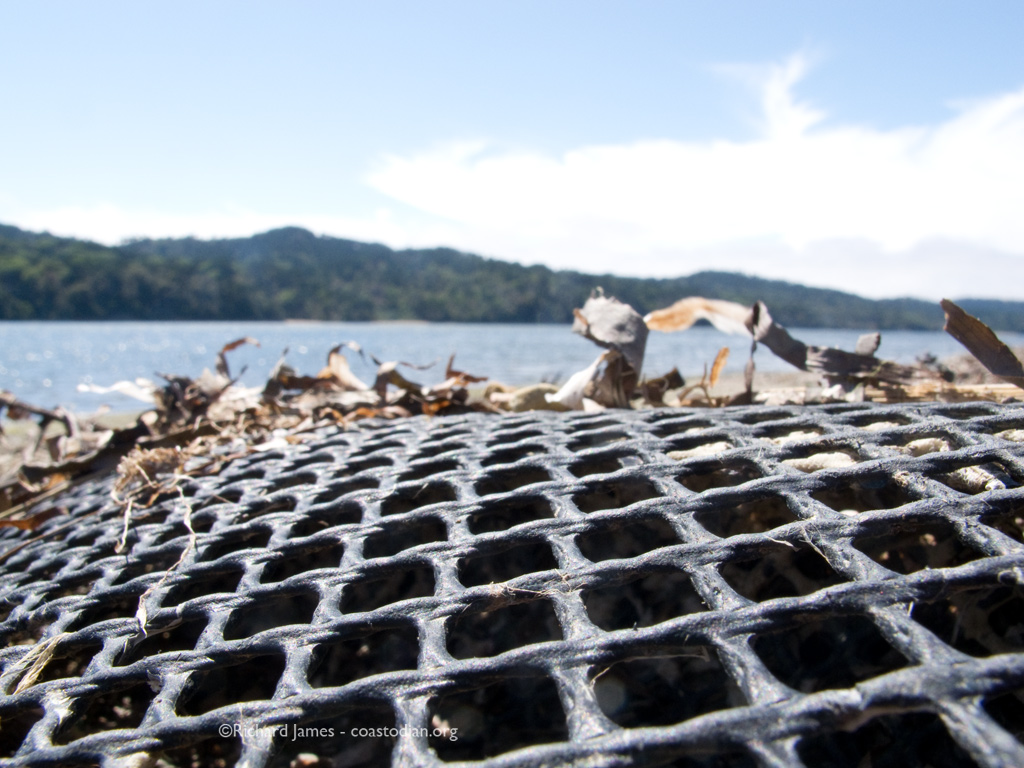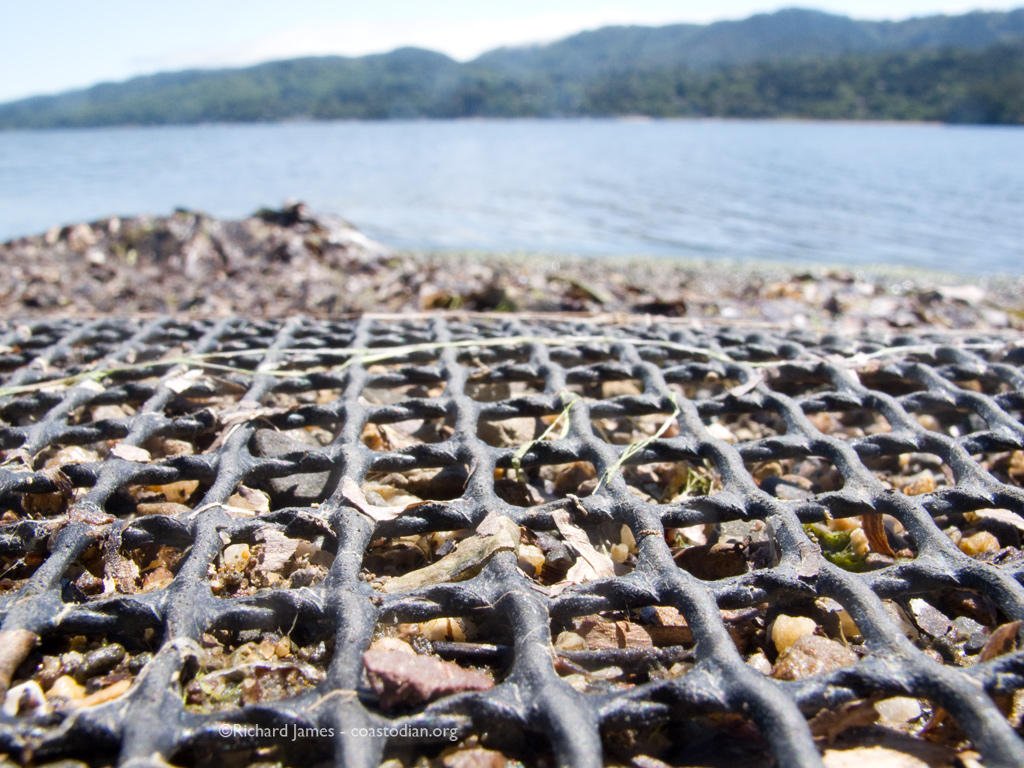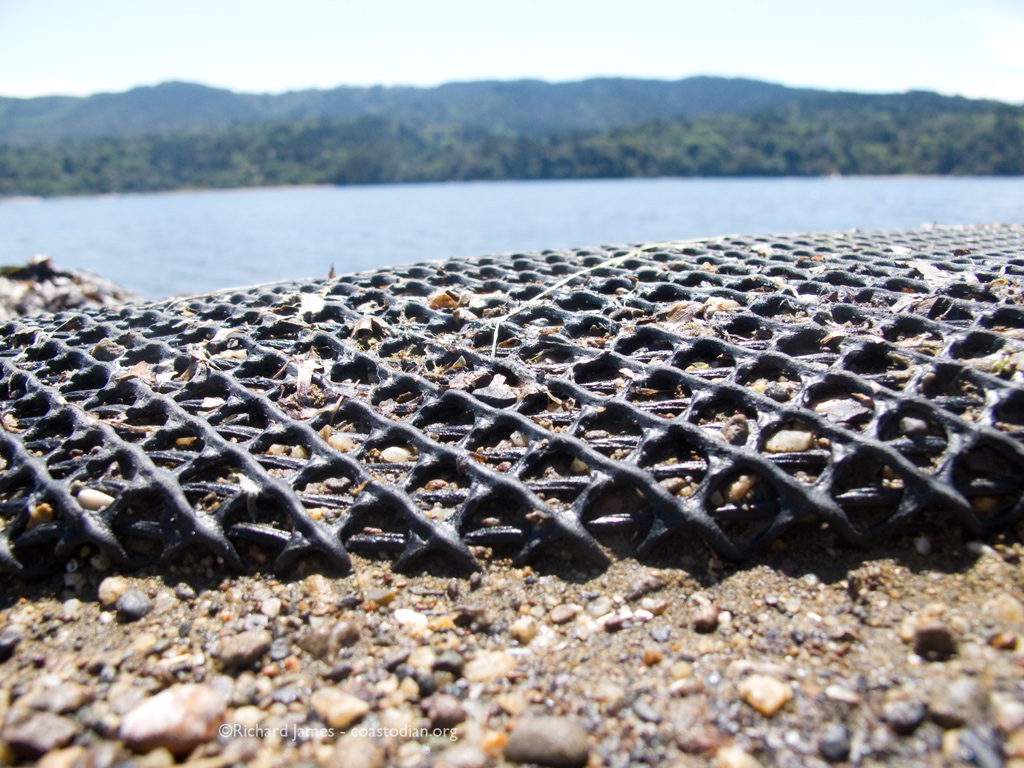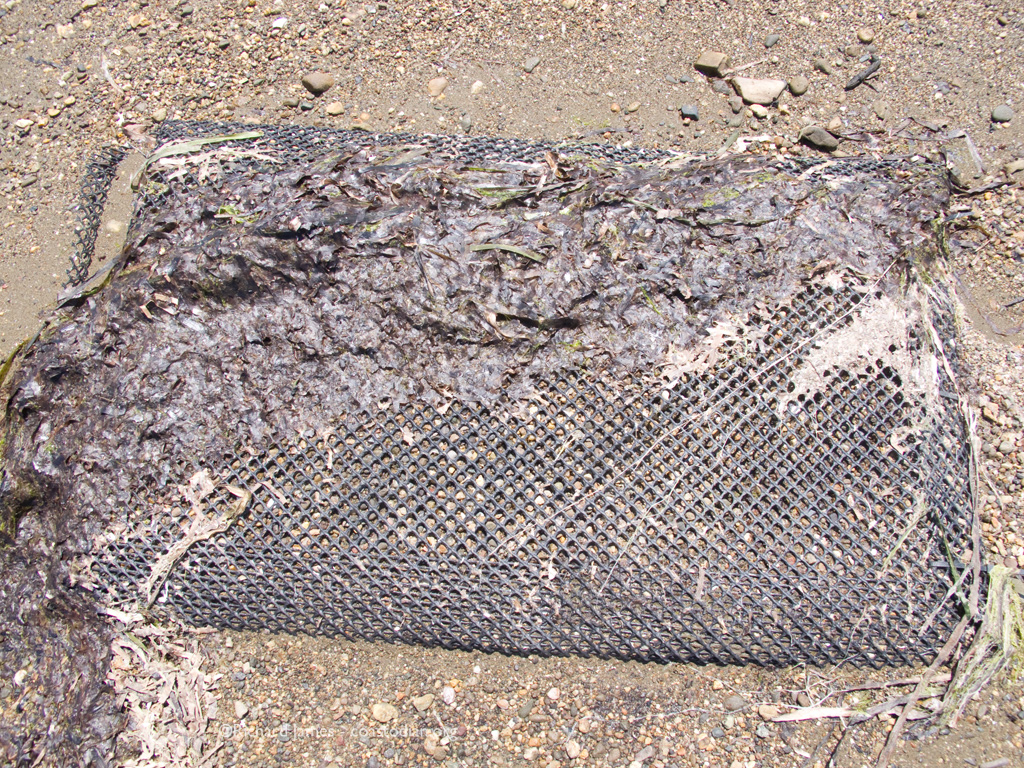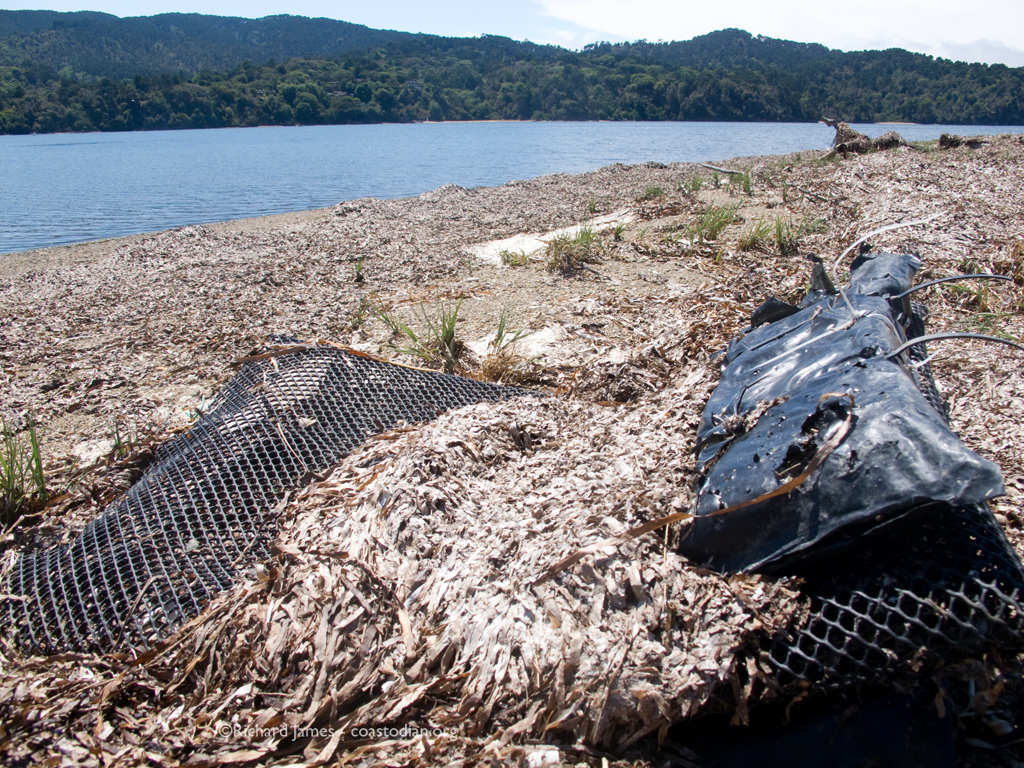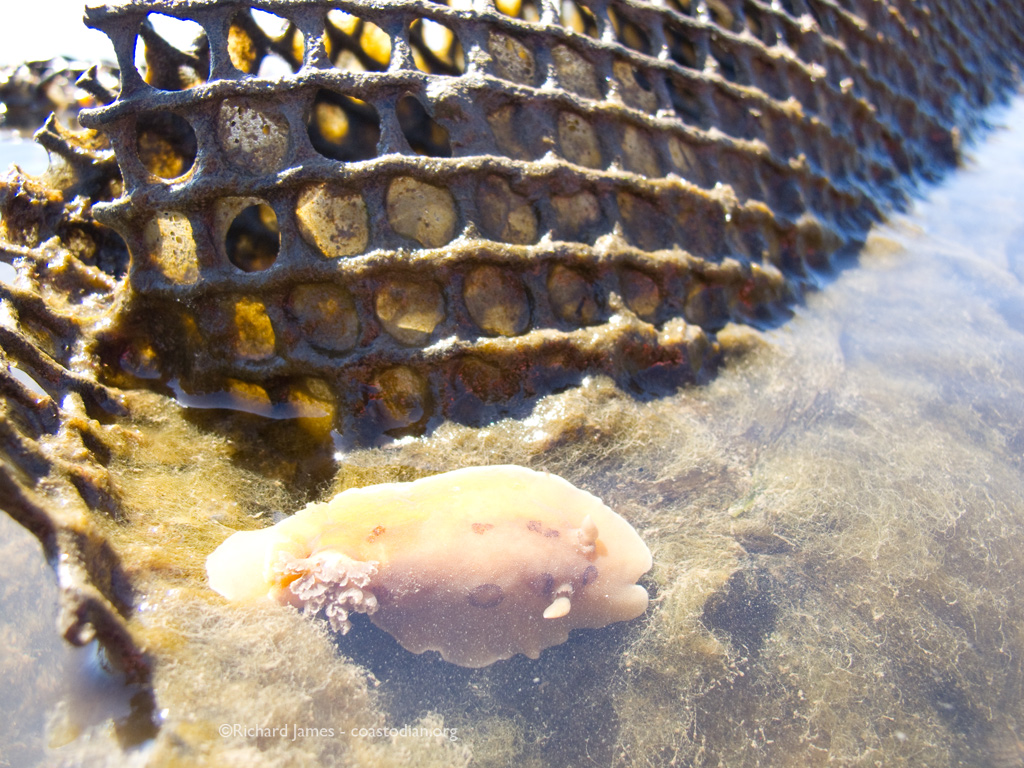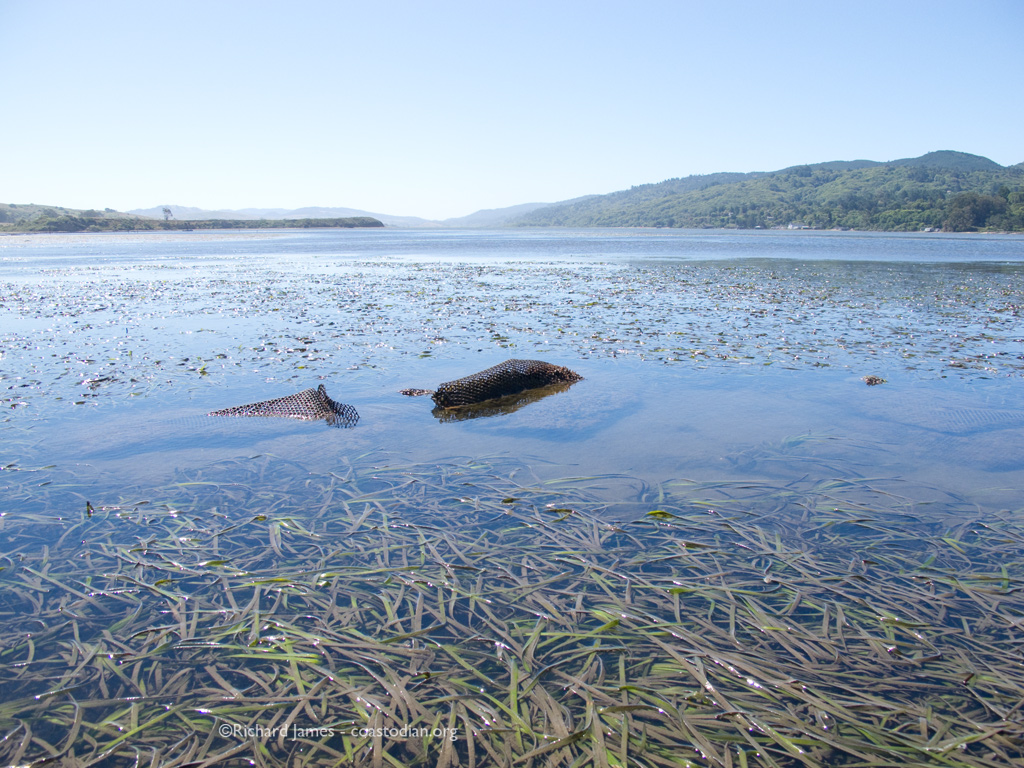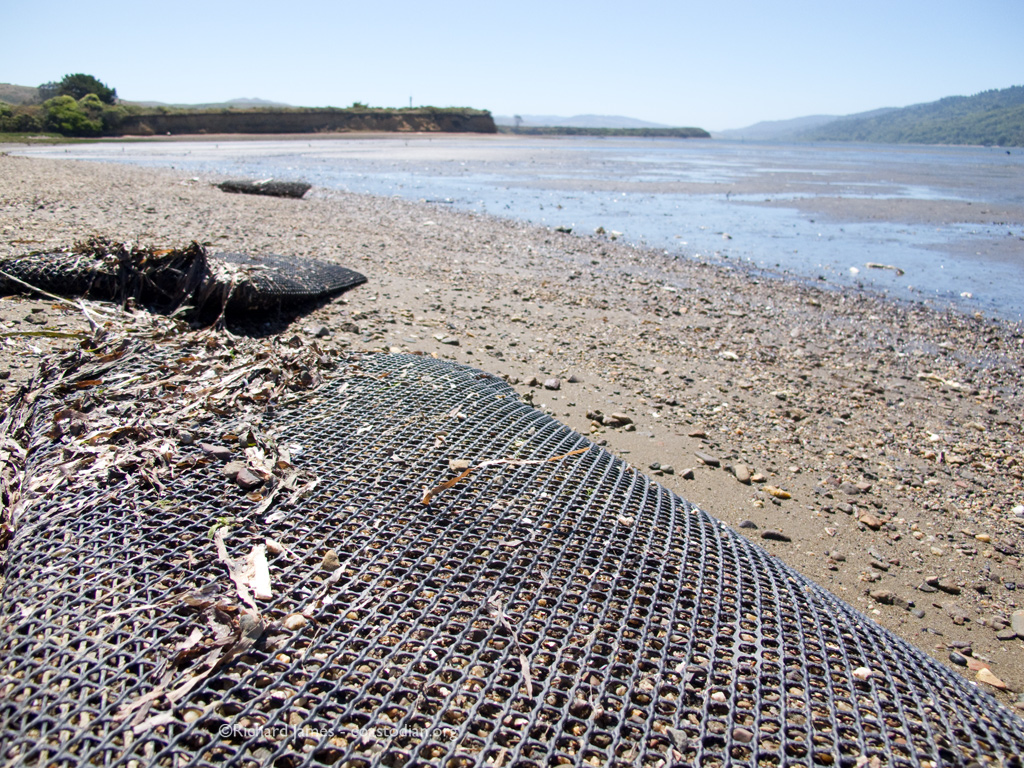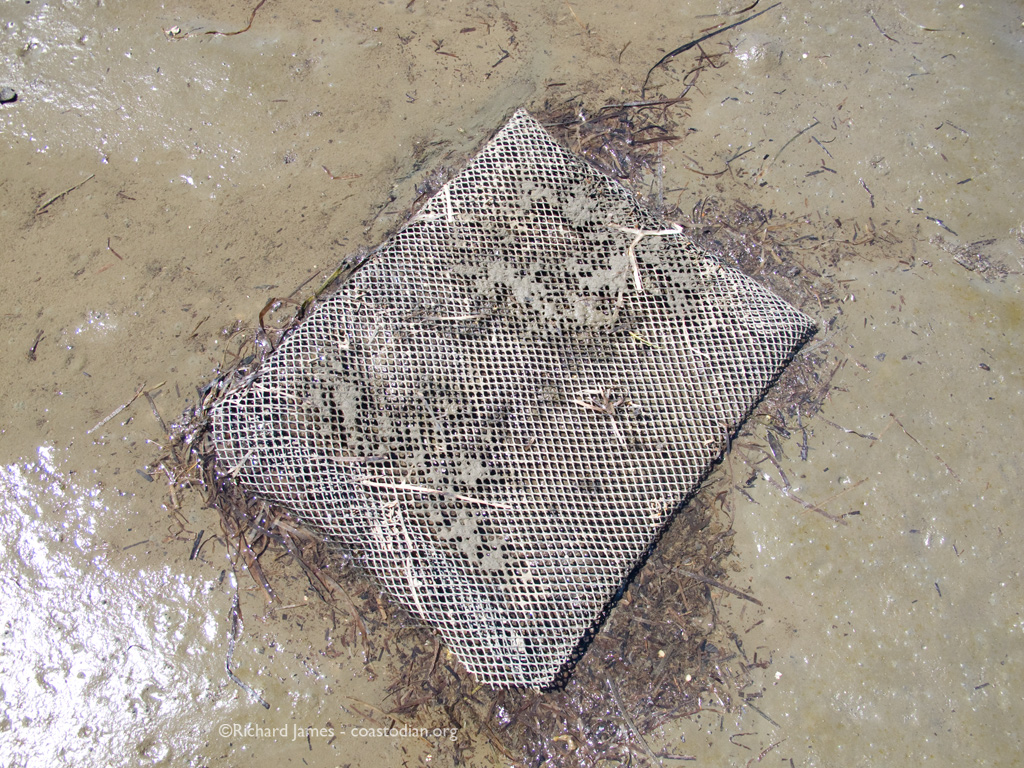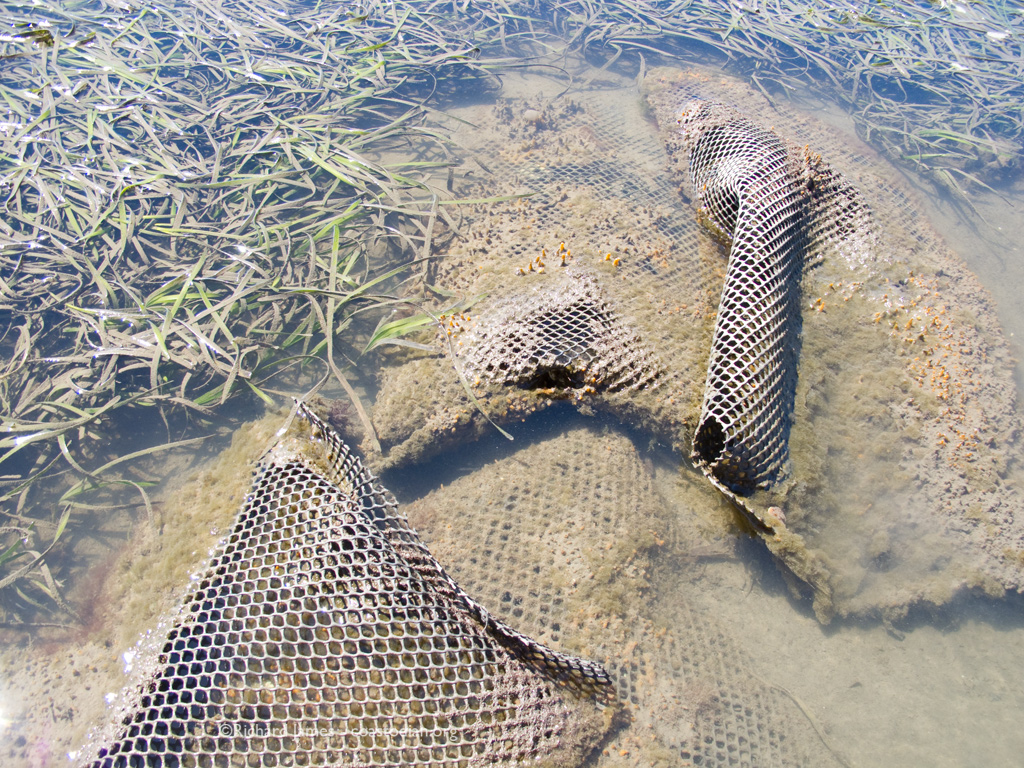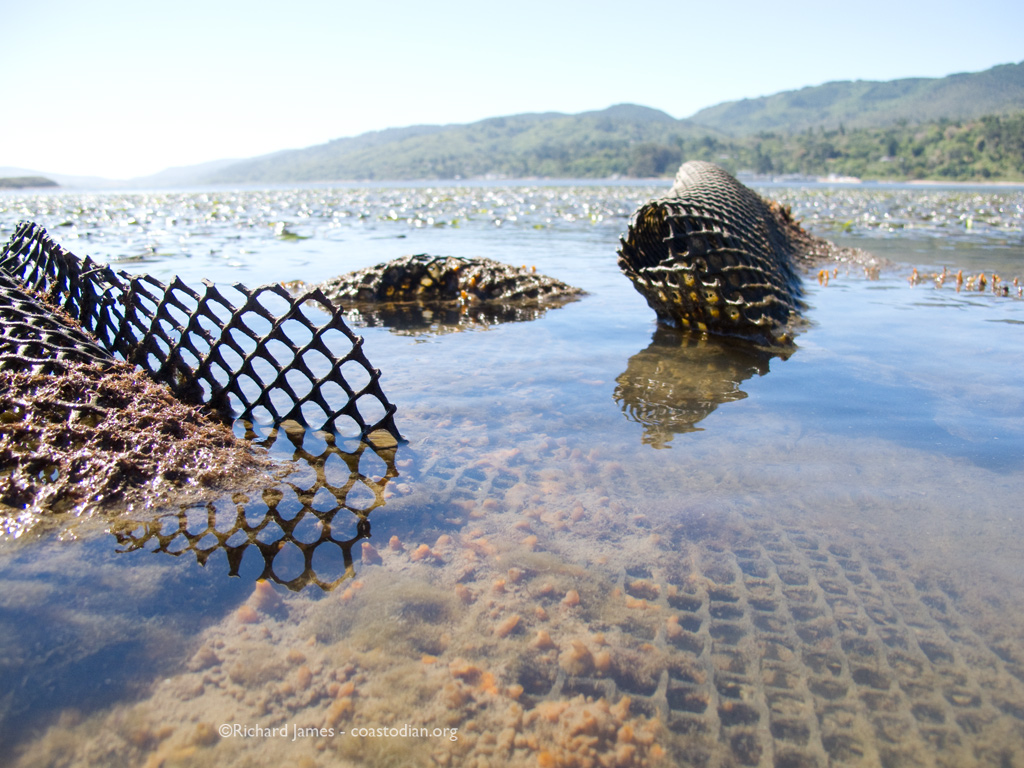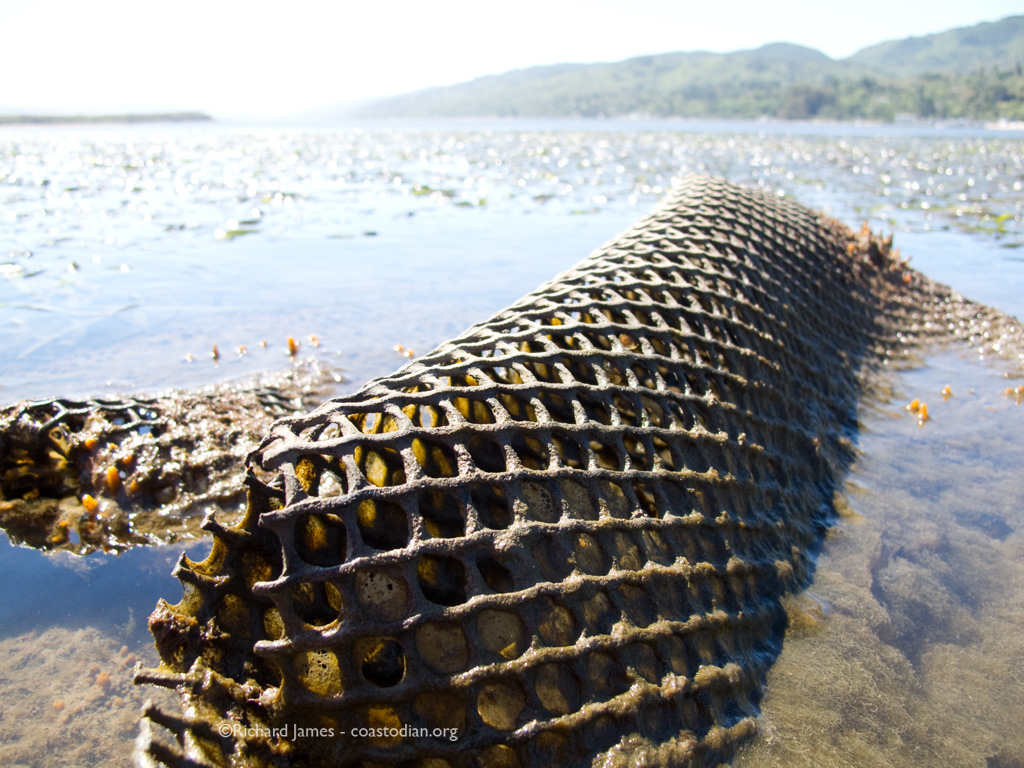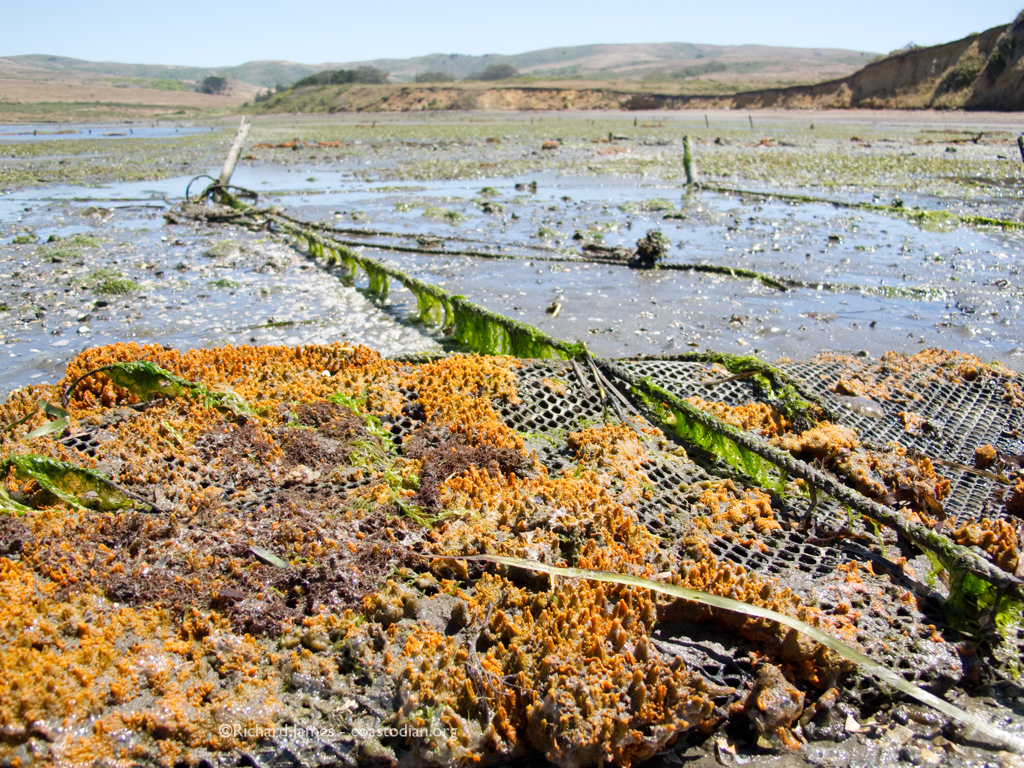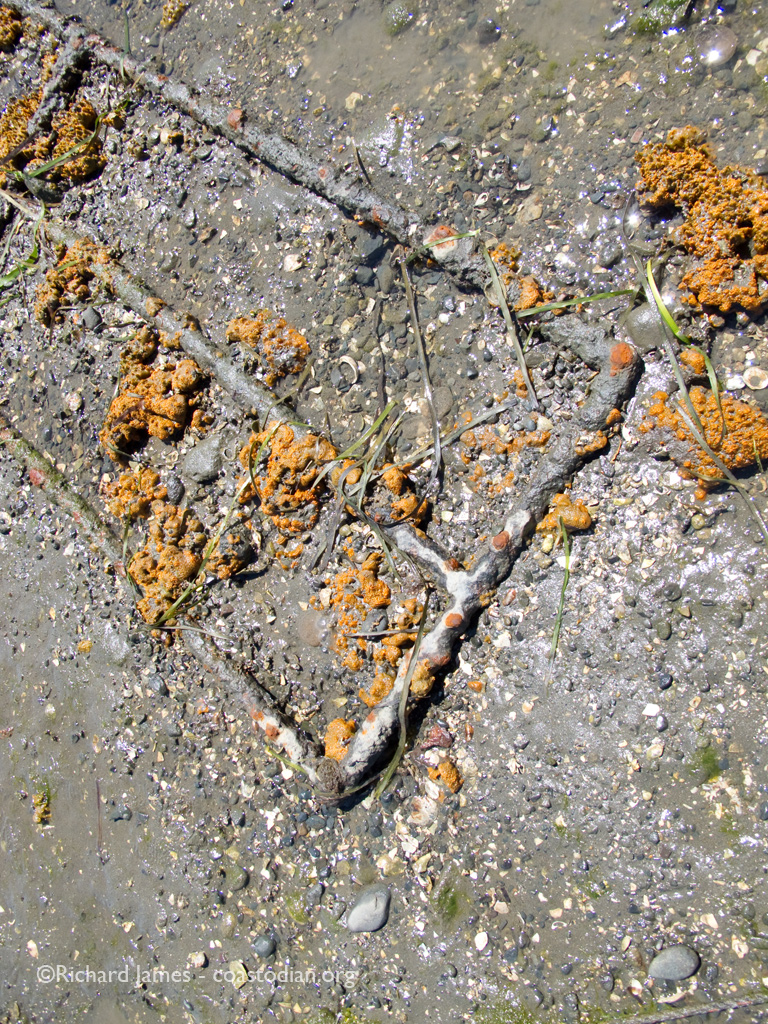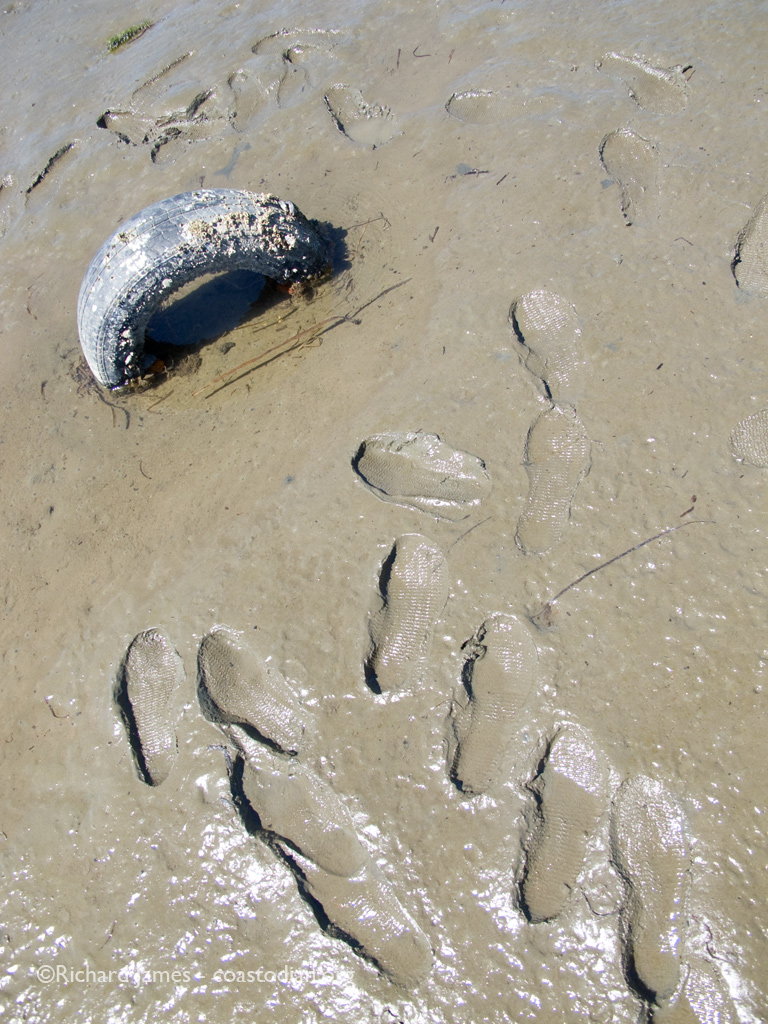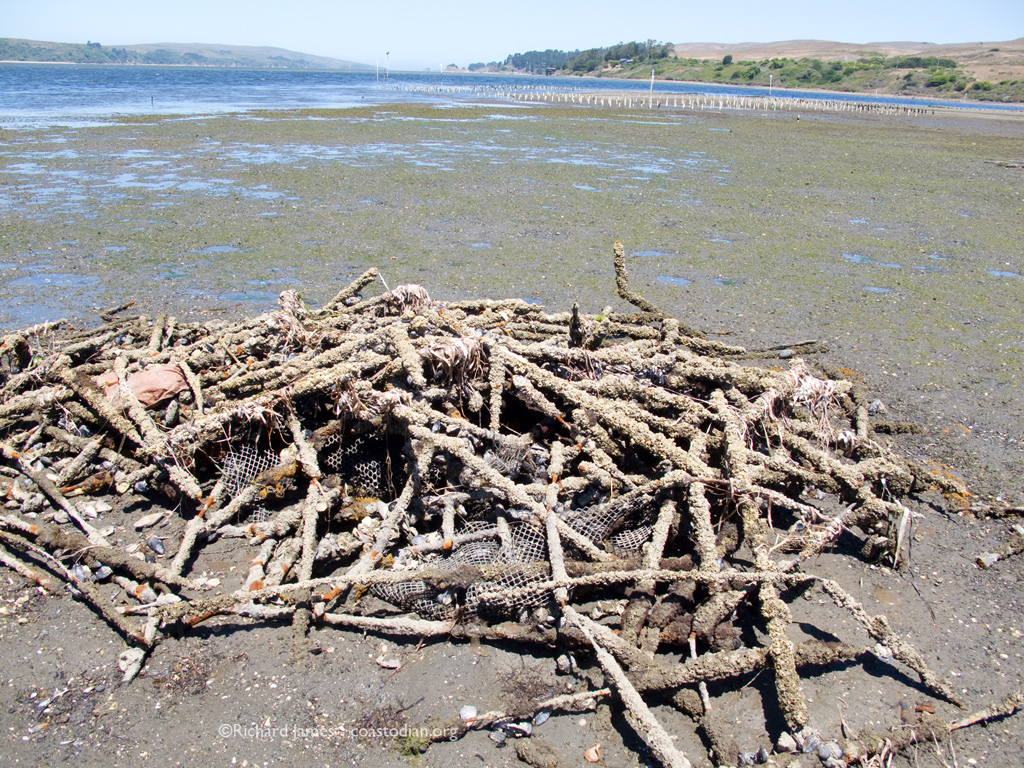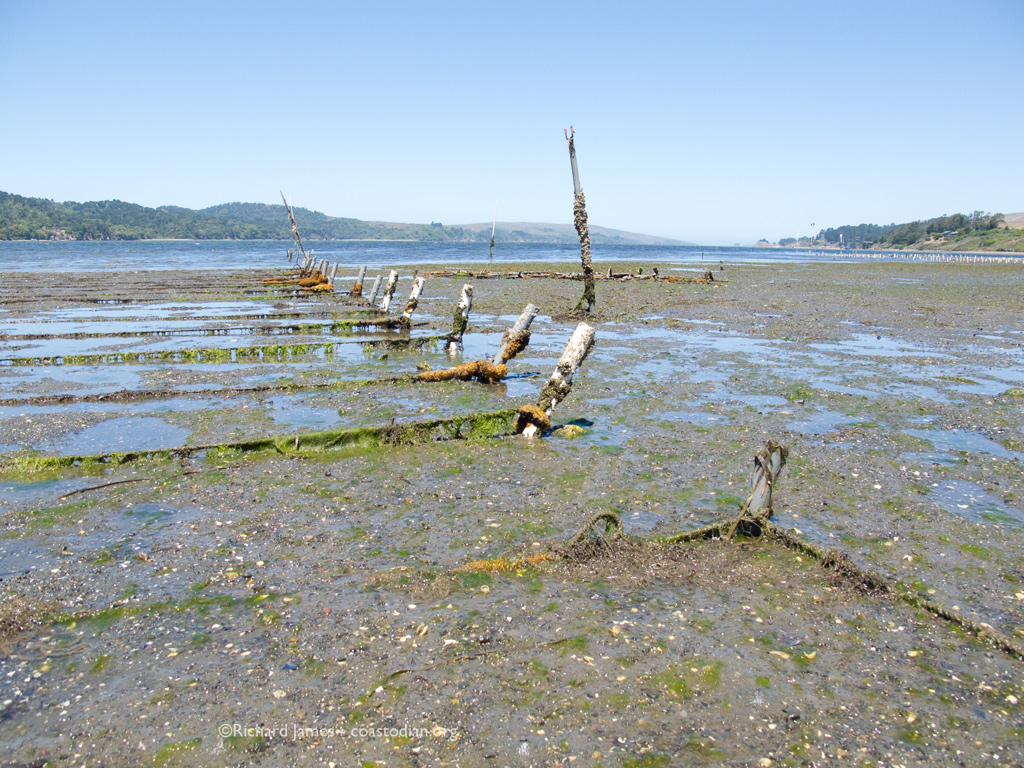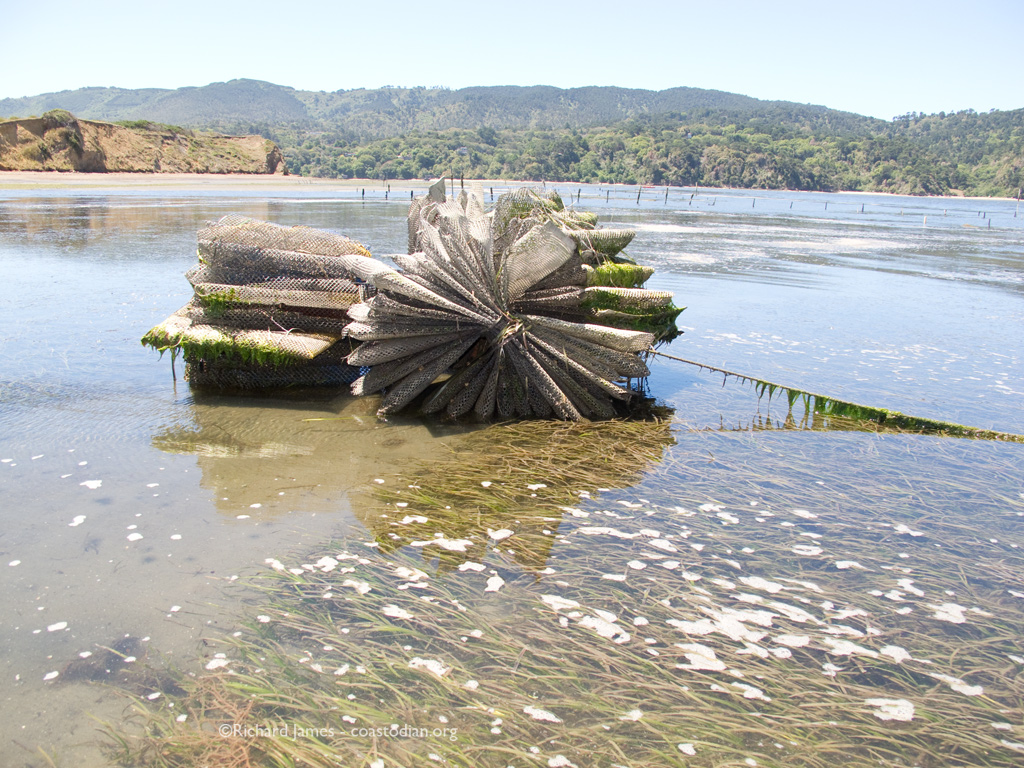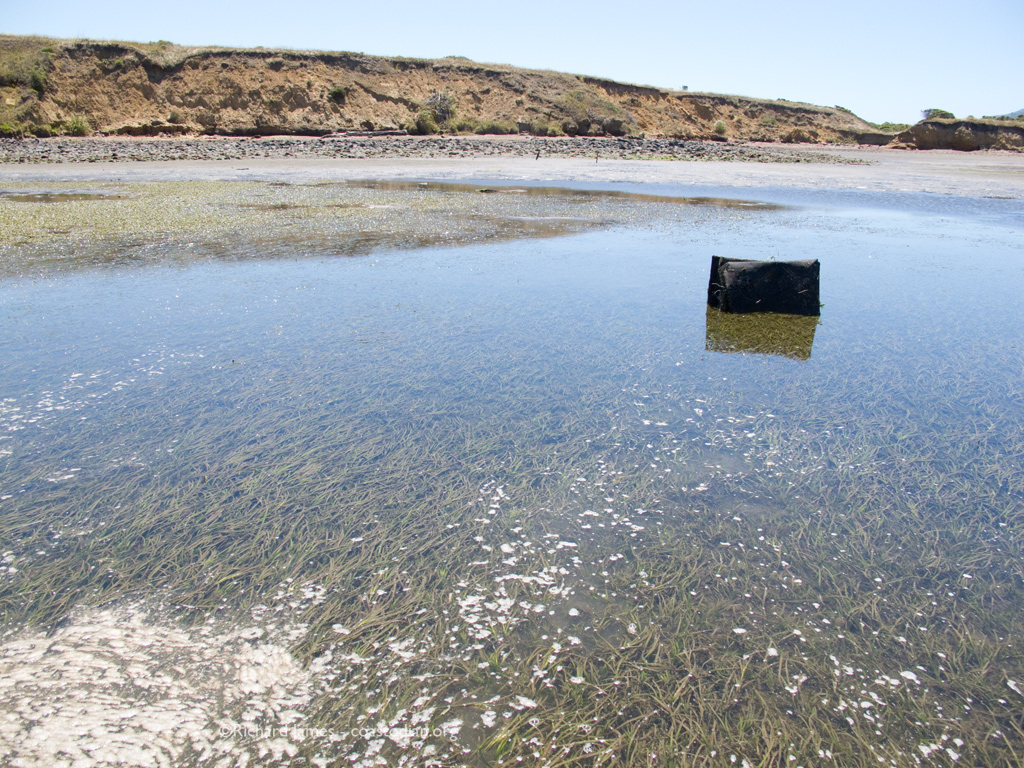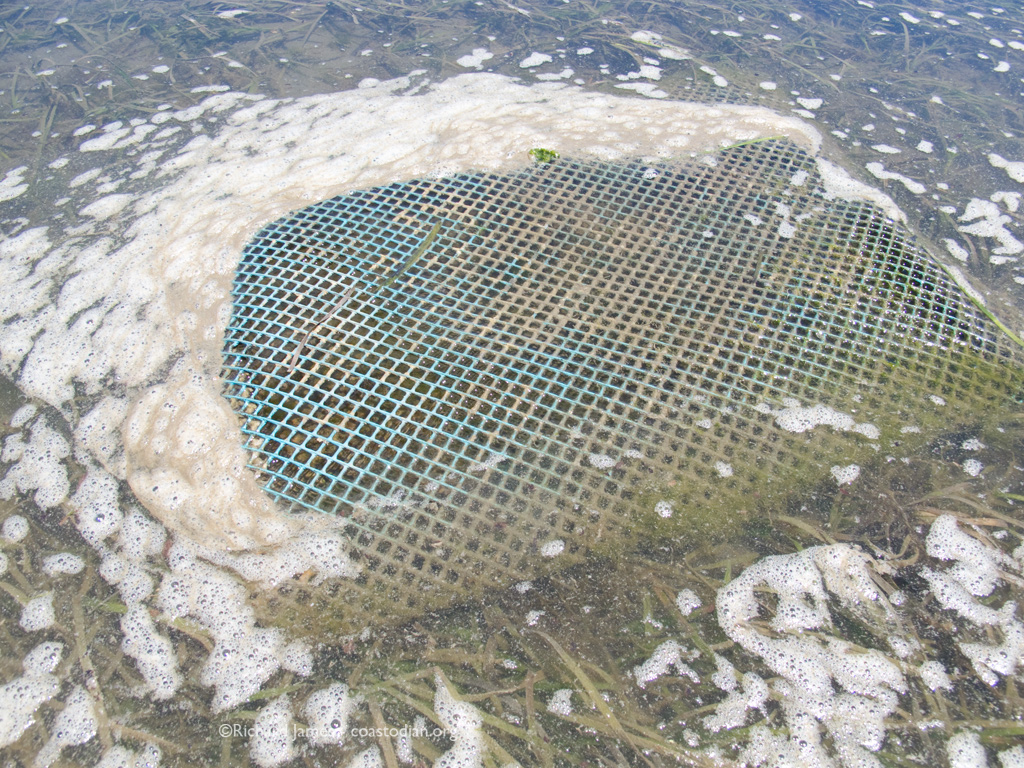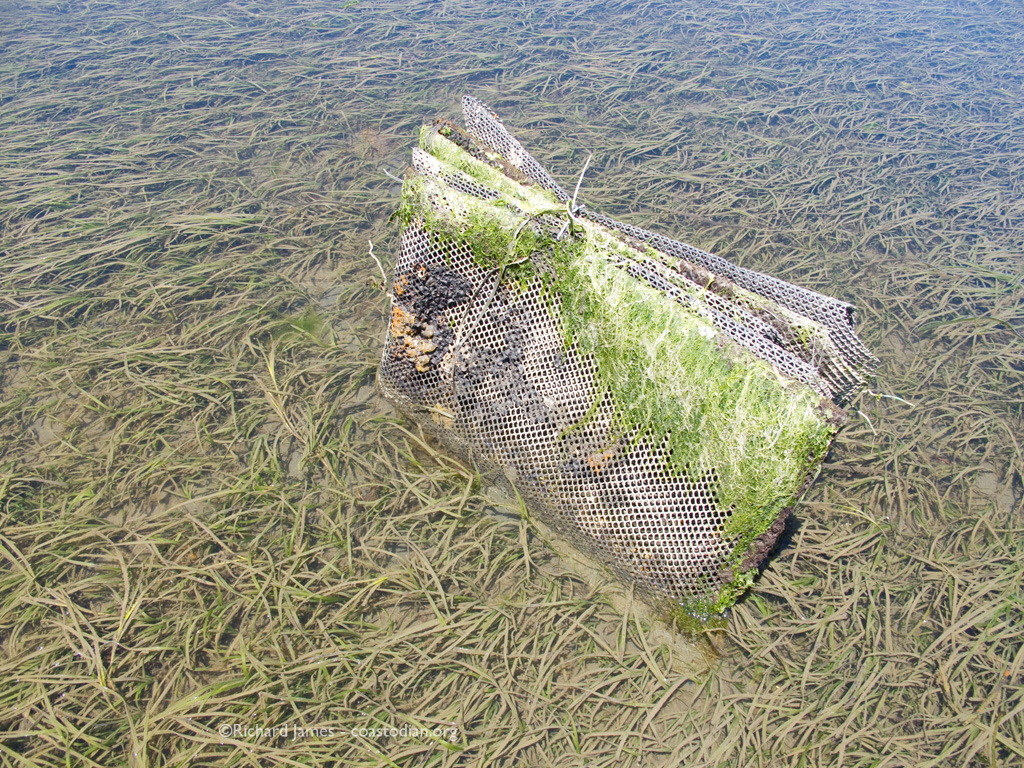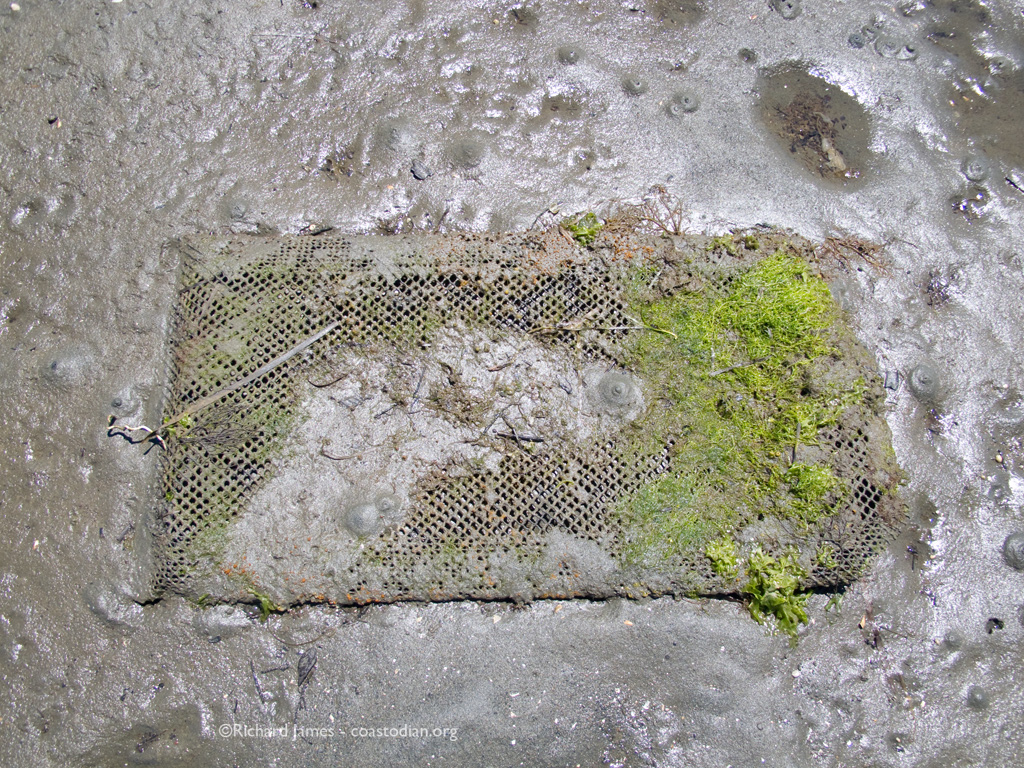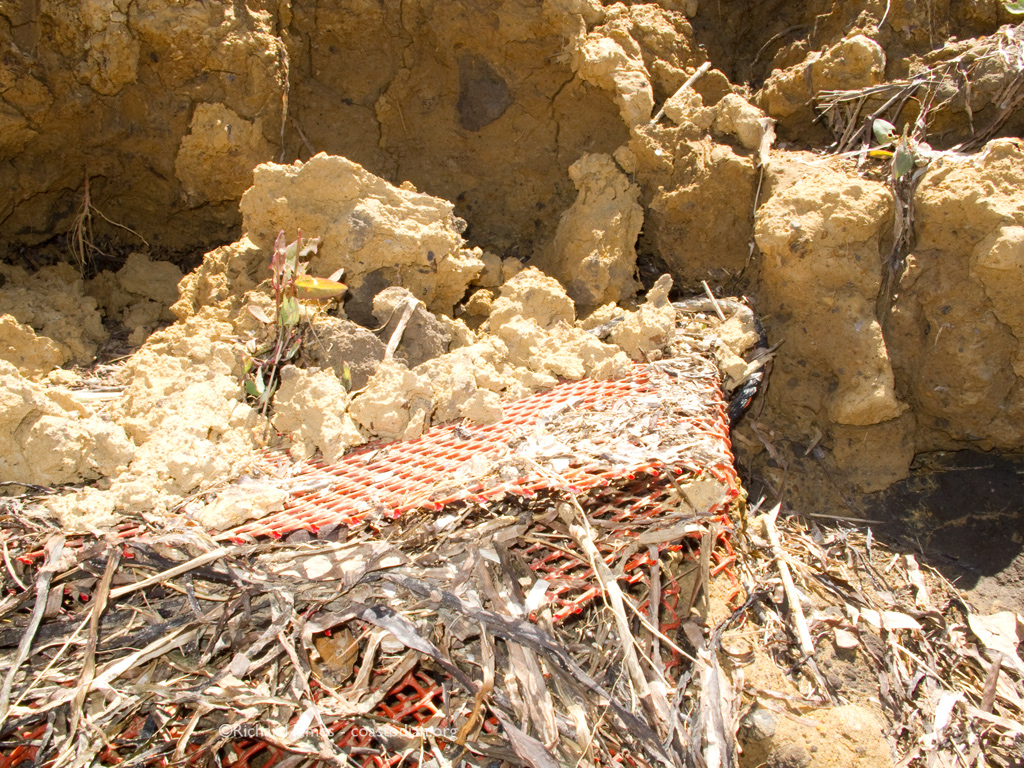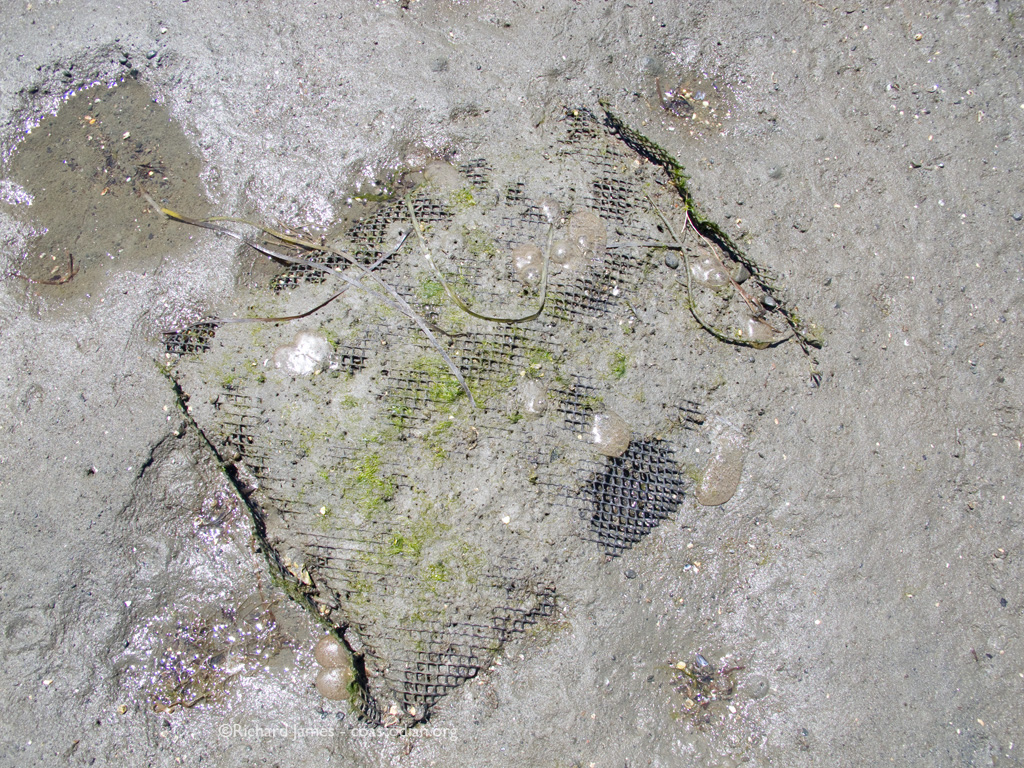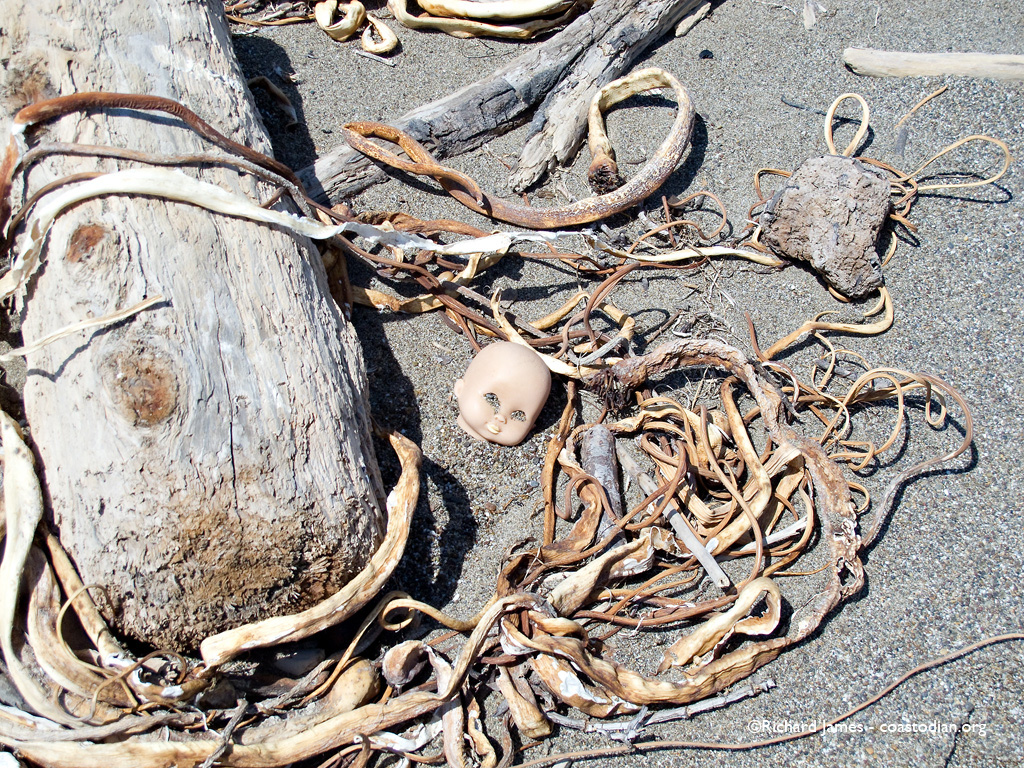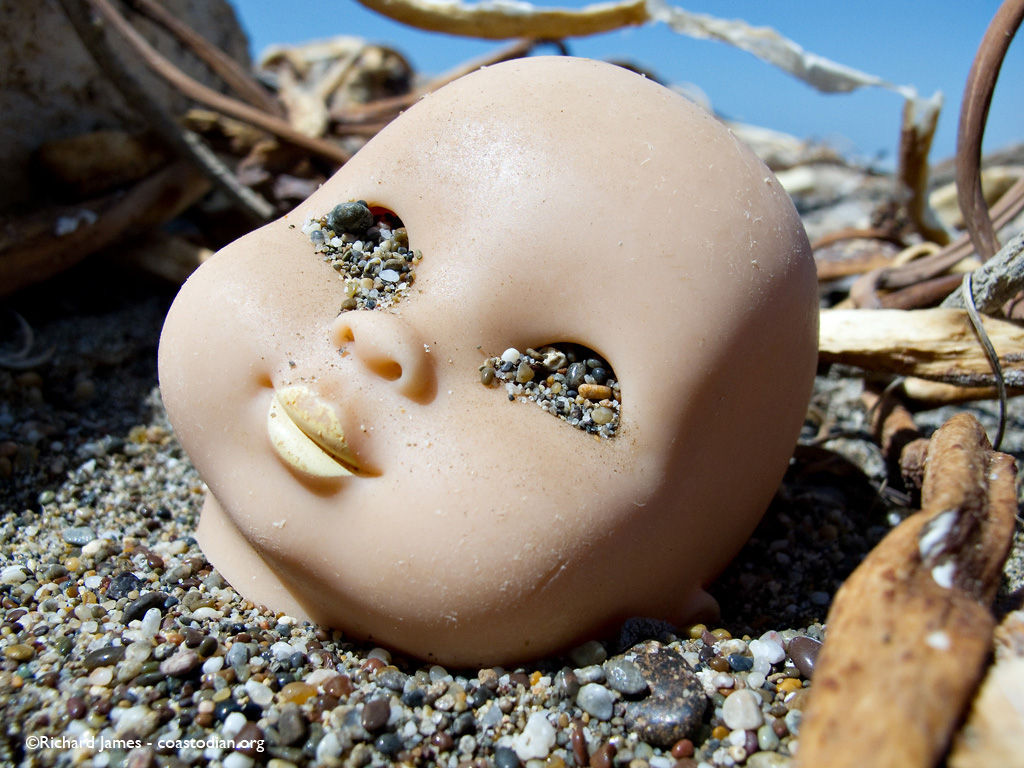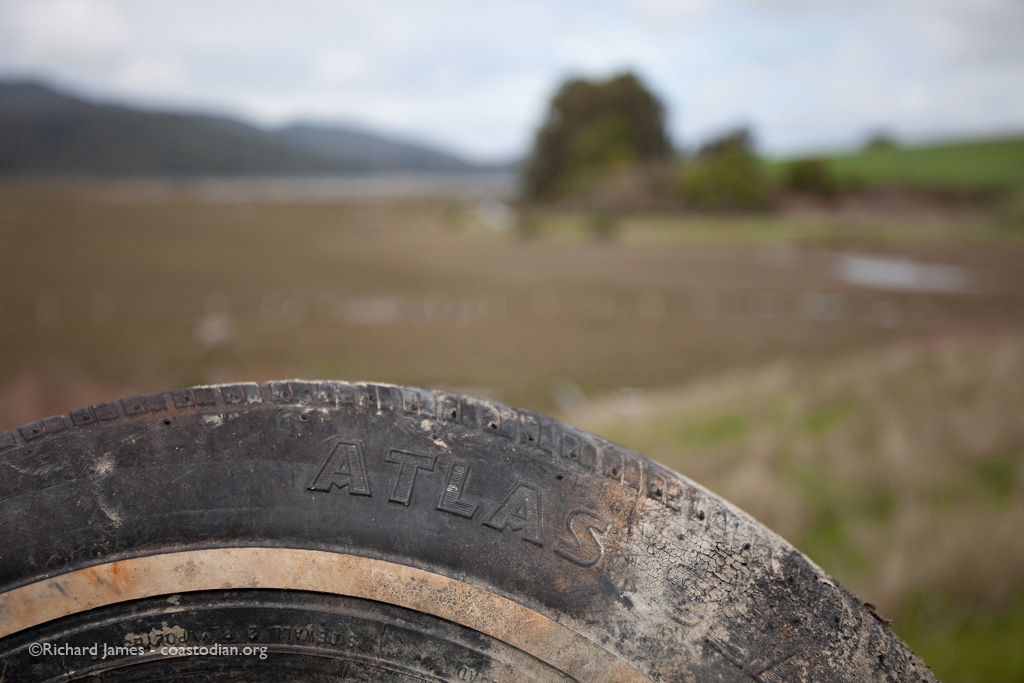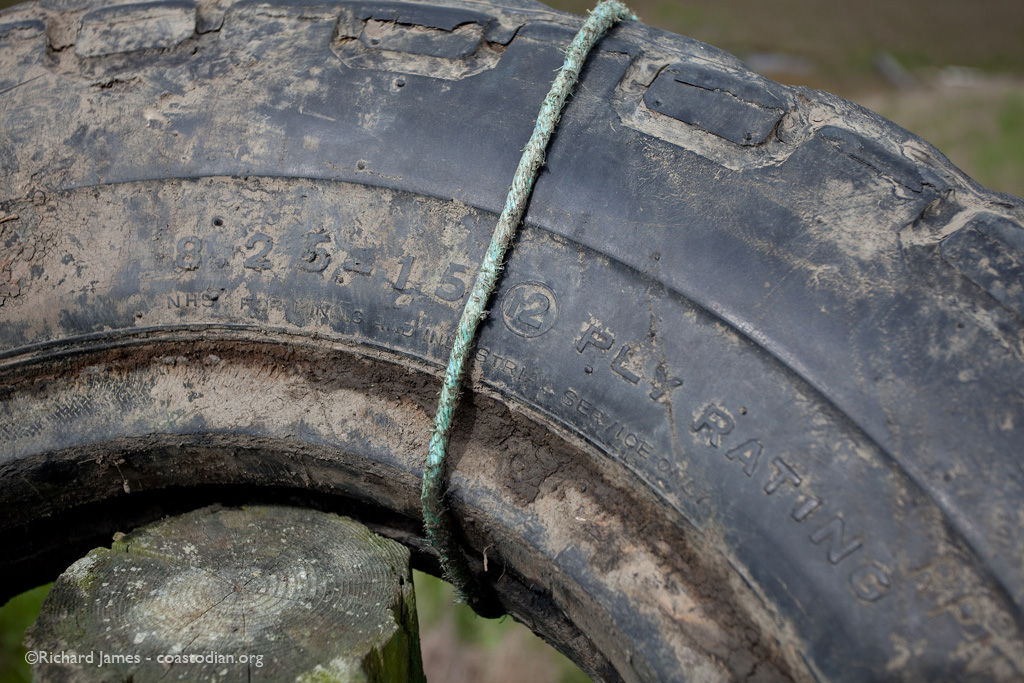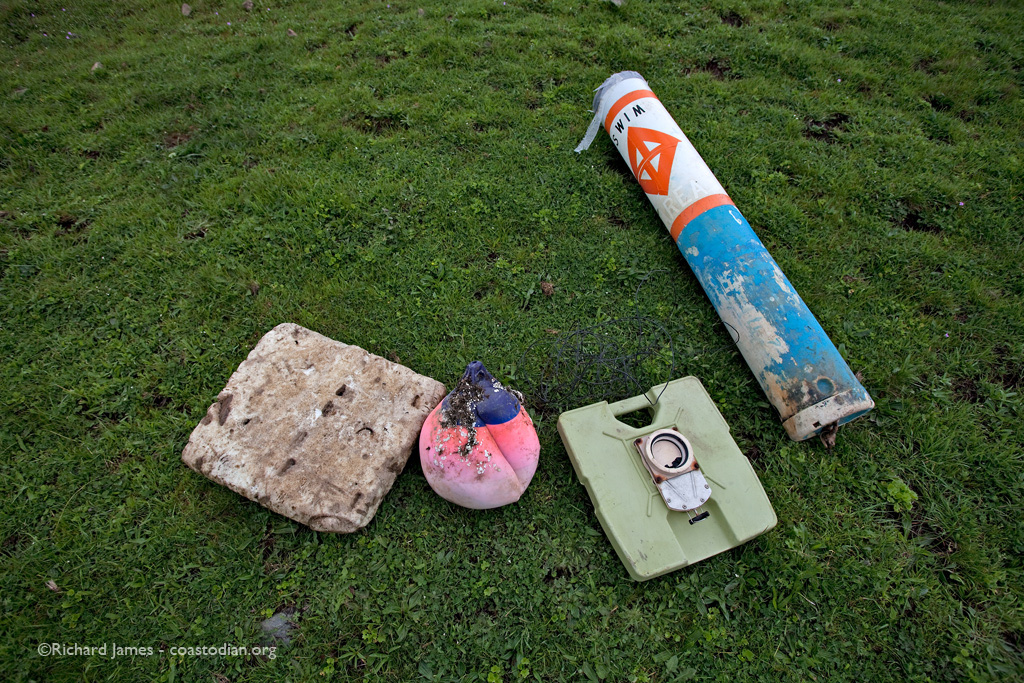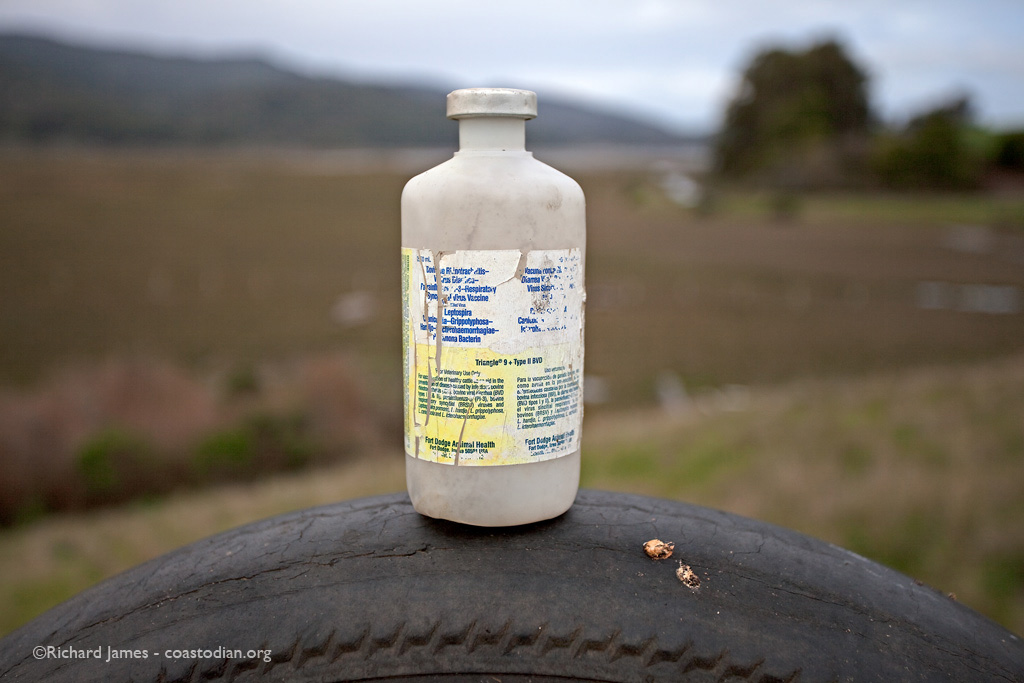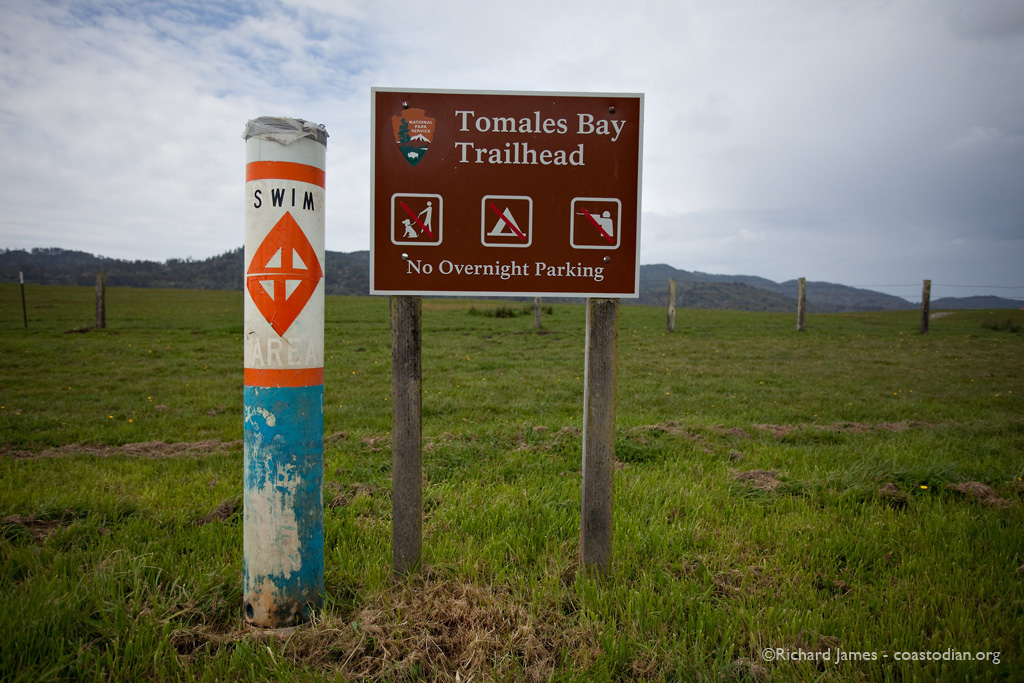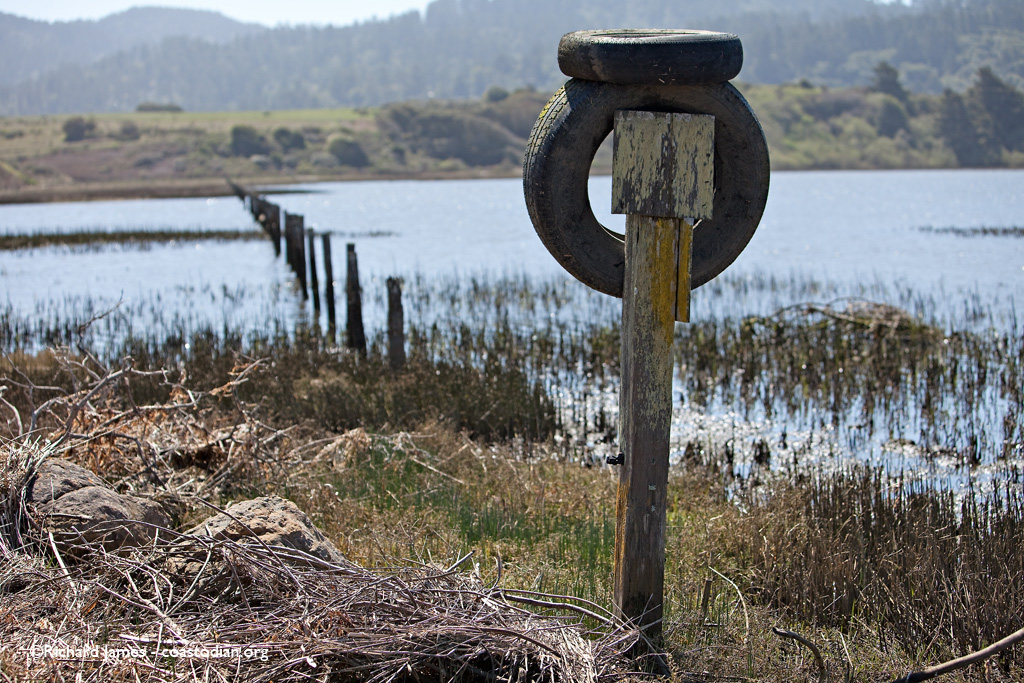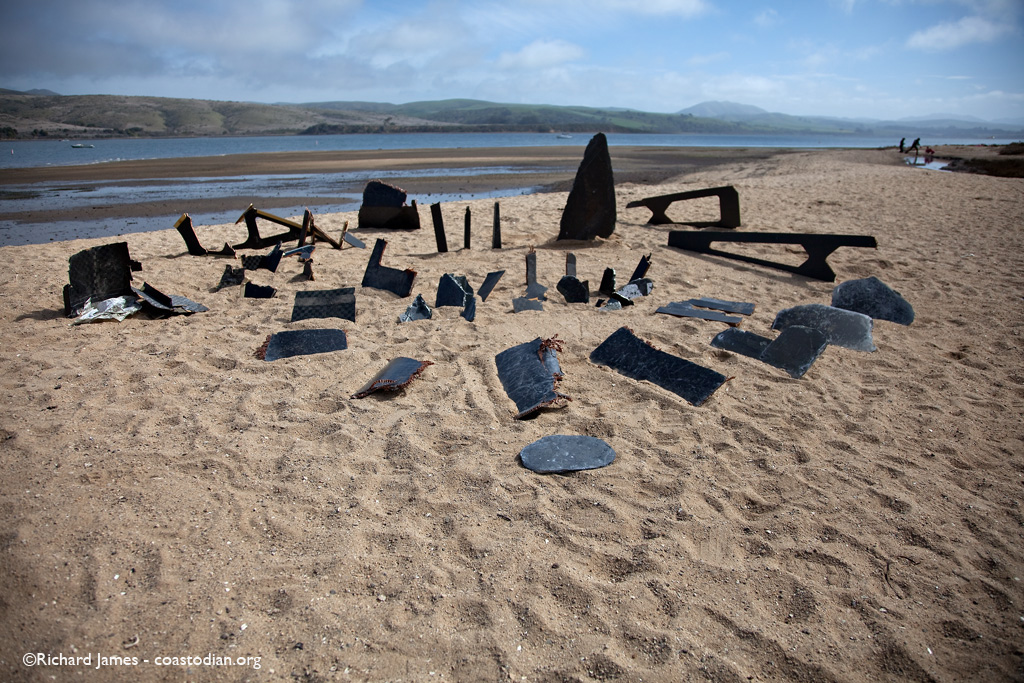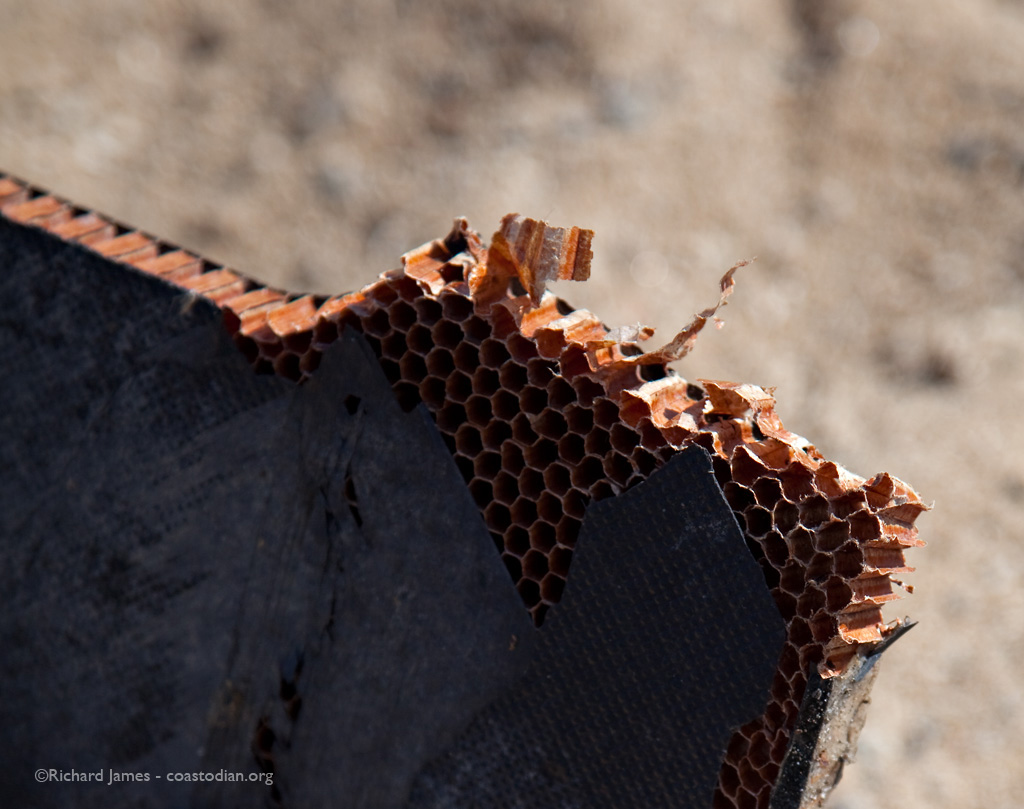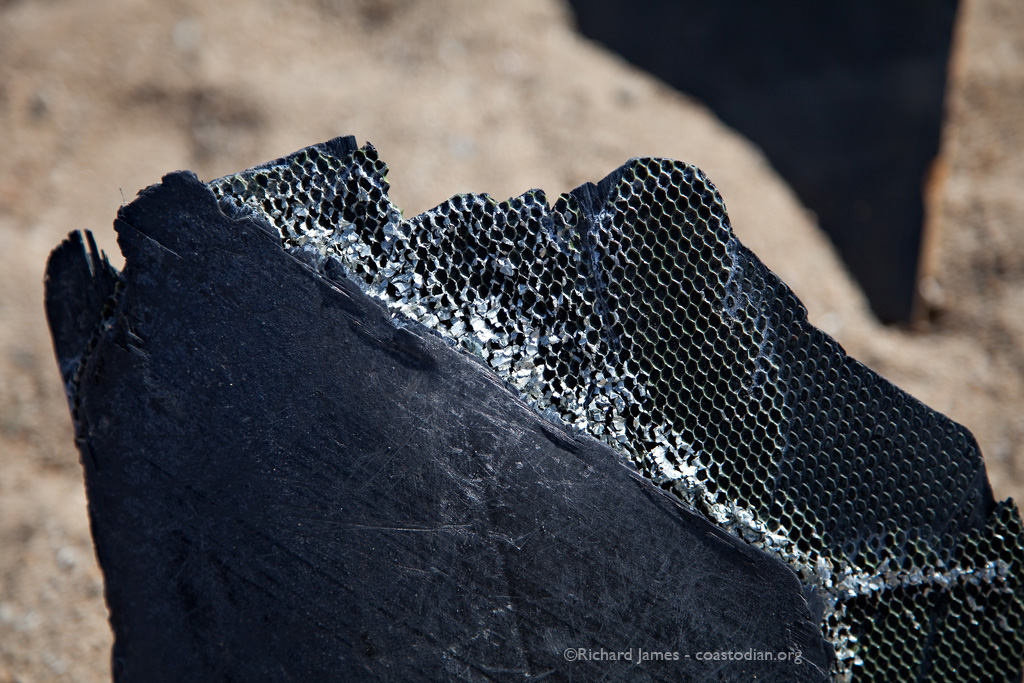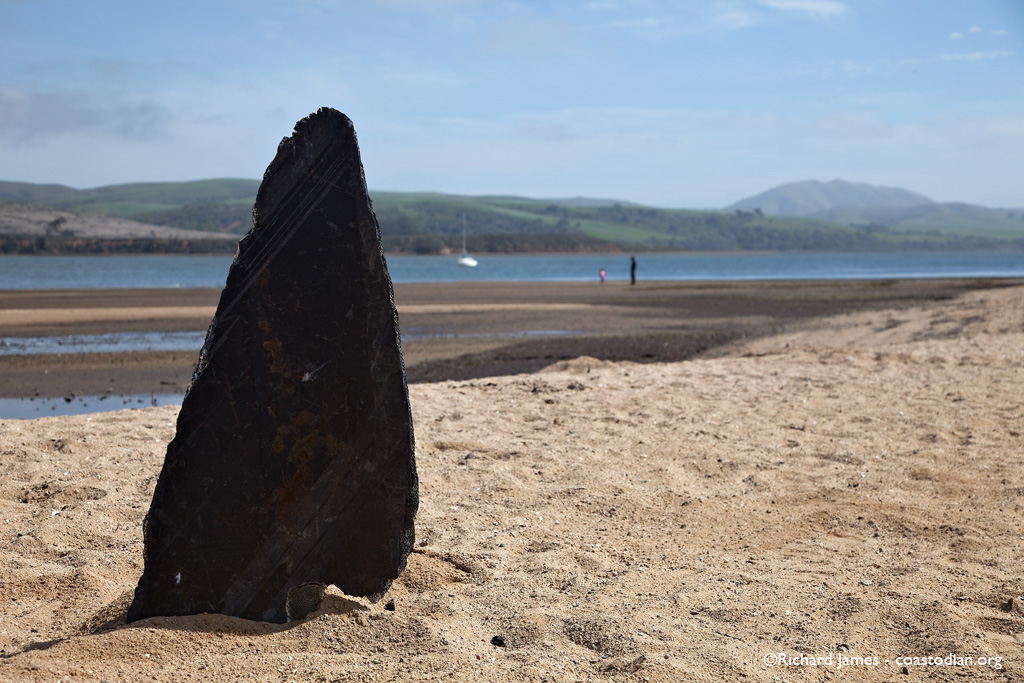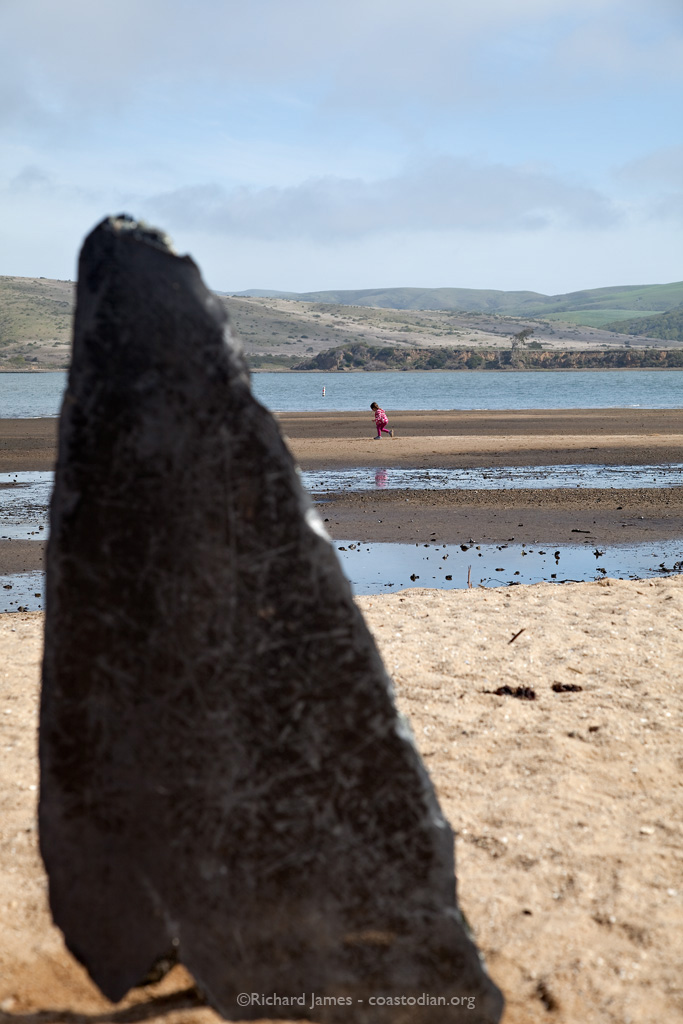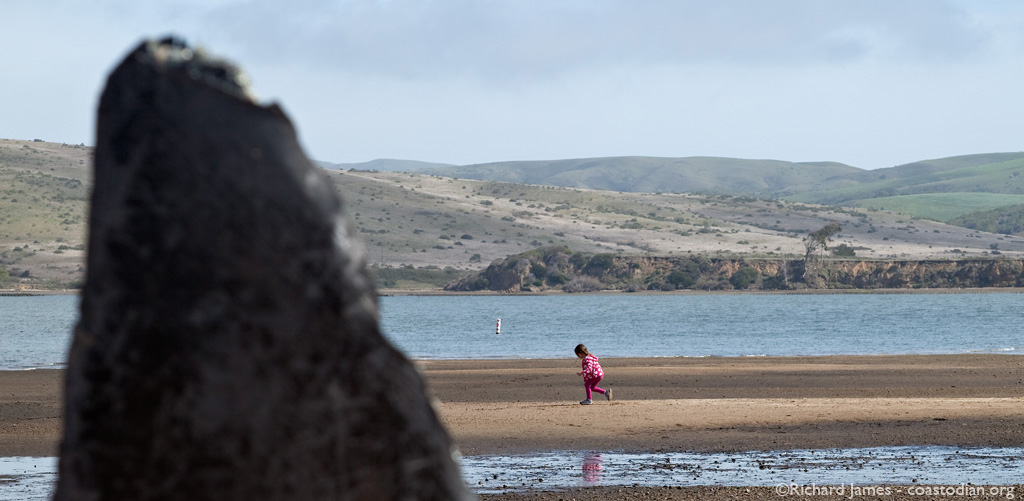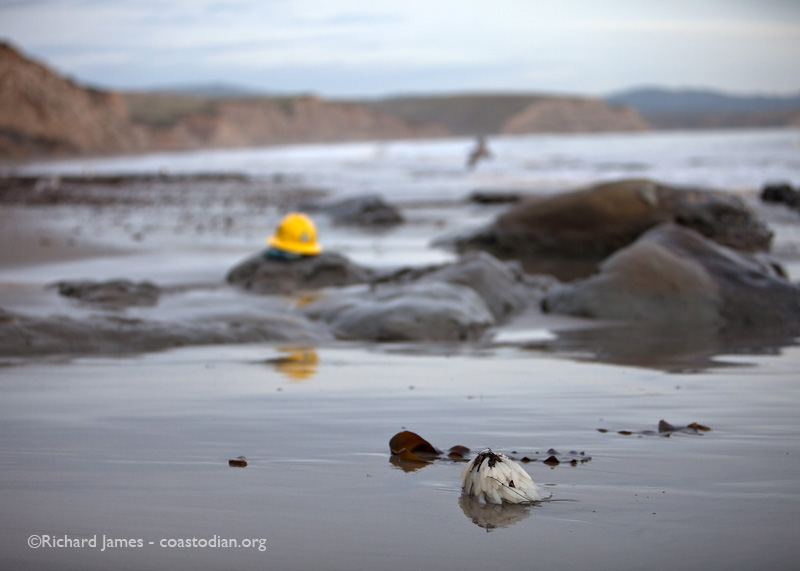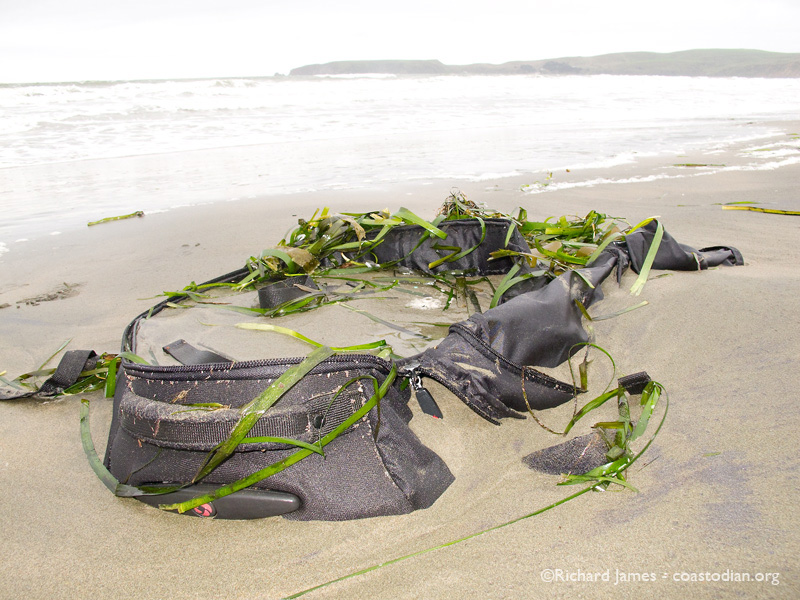Click the words “Save our Tomales Bay…” above to see this post in its entirety.
Nearly two months ago I wrote about a chance meeting with the owner of Tomales Bay Oyster Company on the beach near his operation on the shore of Tomales Bay. This was not the first time I had spoken with Tod about the mess his company makes in Tomales Bay.
You can read that post here.
I thought he had finally come to see the error in his methods and was going to instruct his employees to quit throwing trash into Tomales Bay, make simple changes to some of his processes and reduce the amount of plastic his business knowingly dumped into the bay.
How wrong I was.
Since January I have walked a quarter mile section of coastline adjacent to his business each week and picked up anything that did not belong. Plastic bags, hundreds of plastic zip-ties, ropes, glass, rubber gloves etc. The vast majority from the oyster company, but not all of it.
For months, I had been gathering a large bag of this trash each week and putting the date on it. A few times I packed out numerous large grow out bags as well, full of dead oysters.
Then, after speaking with Tod, three weeks in a row I found barely more than a handful. Woo hoo I thought. They are going to stop polluting so much, maybe even pick up their own trash.
Alas, my excitement was short-lived. The trash was back, same volume as before.
WTF I thought to myself. Their boss and I talked. The workers see me week after week, knowing I am telling the world of their selfish littering, and still they dump their mess in Tomales Bay.
Well, enough is enough. In the coming week, I’ll show you what I have gathered from the shore where they farm oysters at Tomales Bay Oyster Company. You decide if this is the type of operation that should be expanded up and down the coast of California. The California Department of Fish & WIldlife (DFW) is pushing the “California Shellfish Initiative”. If this is what they are selling, I want no part of it. And neither should anyone else. (Except perhaps a company more interested in short-term profits over a clean environment for those that come after us)
For now, you’ll have to enjoy what appears to me to be a failed experiment left to rot in Tomales Bay.
The images that follow show what I have seen laying in the mud for years – out of sight to all but a fool such as myself, barely 500 meters from the tables filled to capacity each weekend with oyster eaters, ignorant what is being done to the planet to put shellfish on their table and money in the pockets of a few hard-working, yet uncaring, selfish shellfish individuals.
Feast your eyes on the carnage wrought by Tomales Bay Oyster Company, then call them and ask that they stop trashing Tomales Bay. (415) 663-1243.
All of the following images were made on 19 April, 2014 between 8:24 am and 9:12 am.
—
Click any image to see a huge version
—
—
Click any image to see a huge version
—
—
Click any image to see a huge version
—
—
Click any image to see a huge version
—
—
Click any image to see a huge version
—
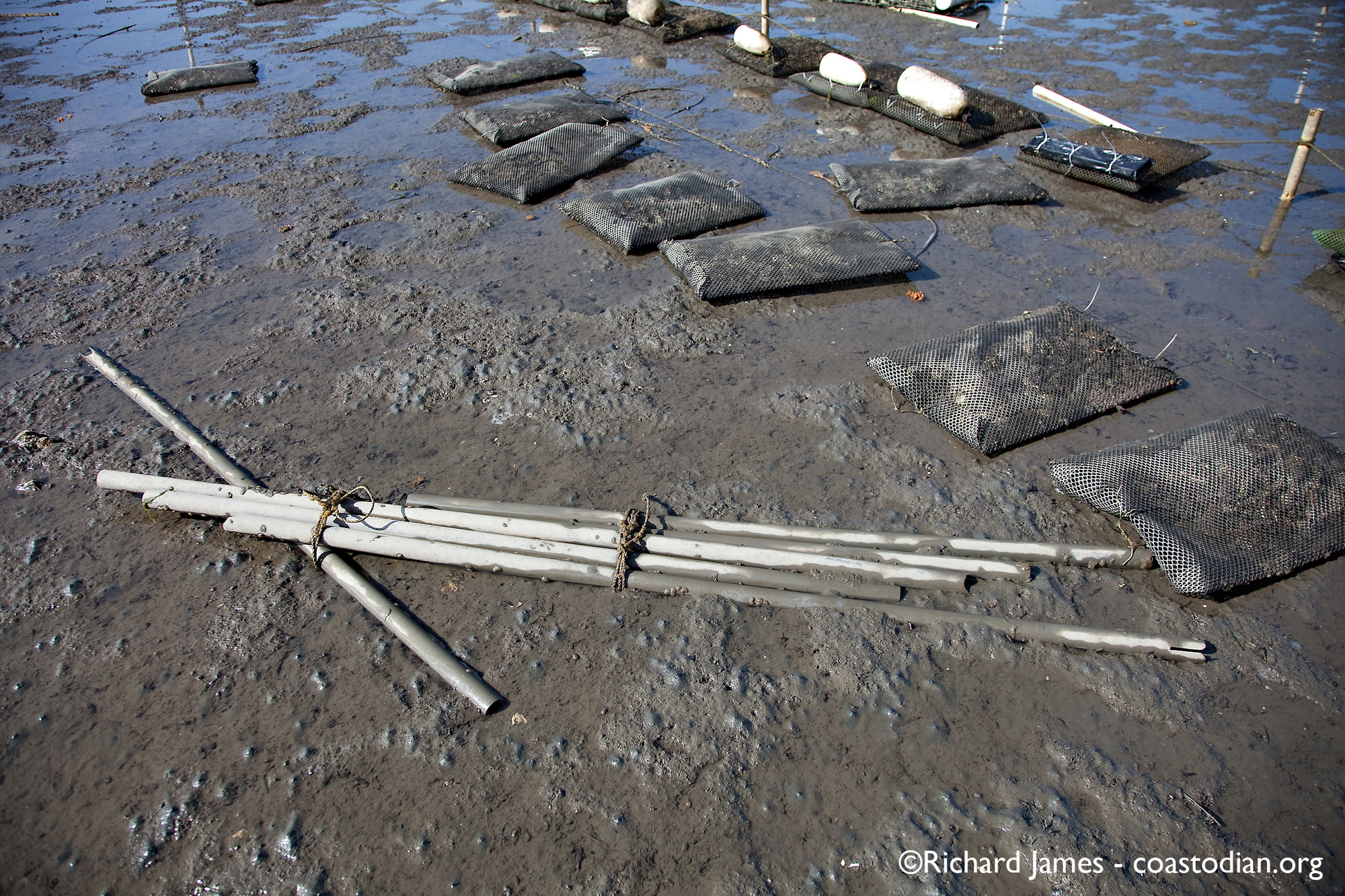
abandoned PVC pipes and in use grow out bags – Tomales Bay Oyster Company
Looks like a hurricane hit a hardware store. If a hardware store looked like this, it would either get cleaned up, or go out of business.
Hardware stores are easy to build. There is only one Tomales Bay.
So…..clean it up, or go out of business!
—
Click any image to see a huge version
—
—
Click any image to see a huge version
—
—
Click any image to see a huge version
—
—
Click any image to see a huge version
—
—
Click any image to see a huge version
—
—
Click any image to see a huge version
—
—
Click any image to see a huge version
—
—
Click any image to see a huge version
—
—
Click any image to see a huge version
—
—
Click any image to see a huge version
—
—
Click any image to see a huge version
—
—
Click any image to see a huge version
—
—
Click any image to see a huge version
—
—
Click any image to see a huge version
—
.
Next related post may be found here.
Previous related post may be found here.
See the first post in this series “Save our Tomales Bay” here.

